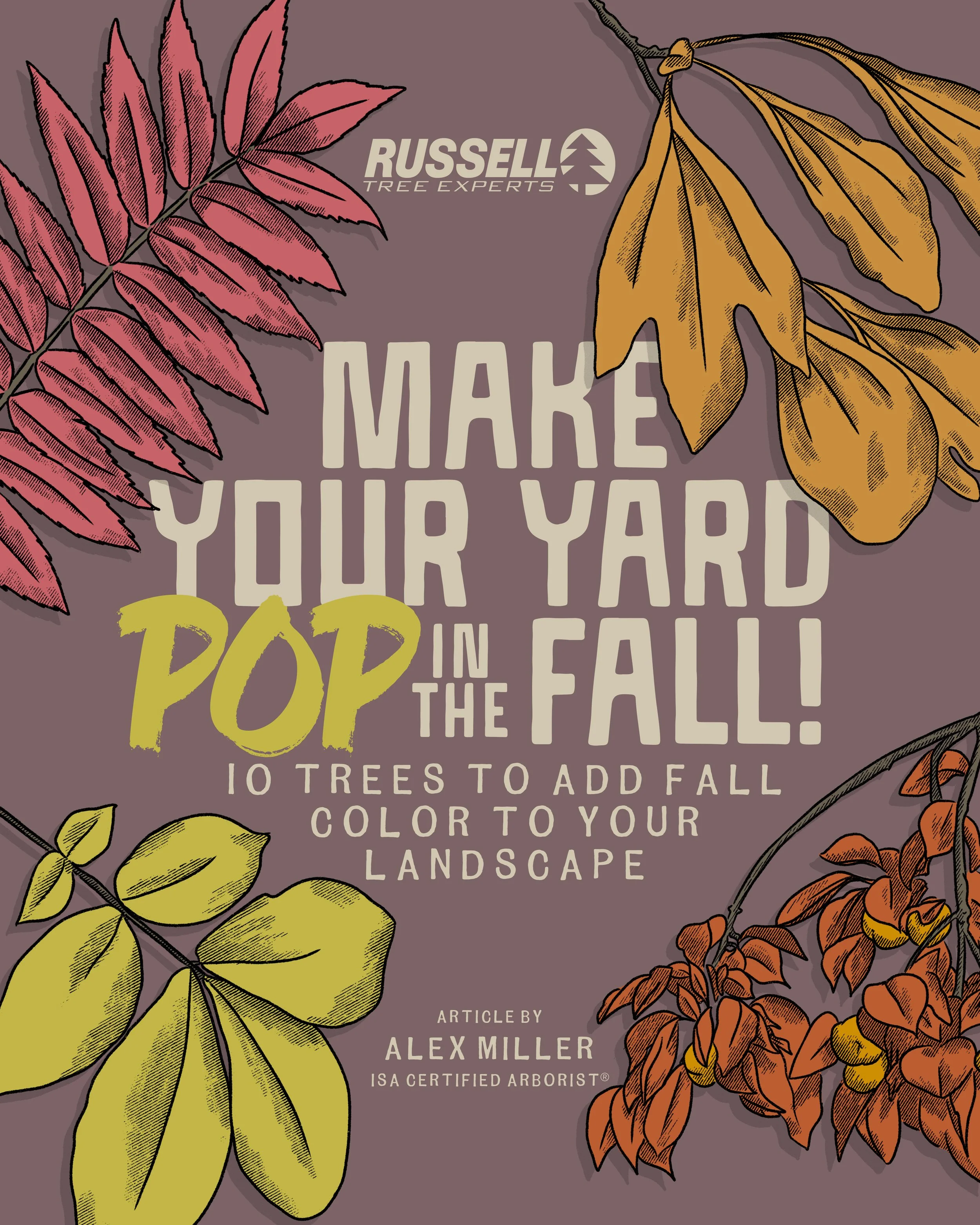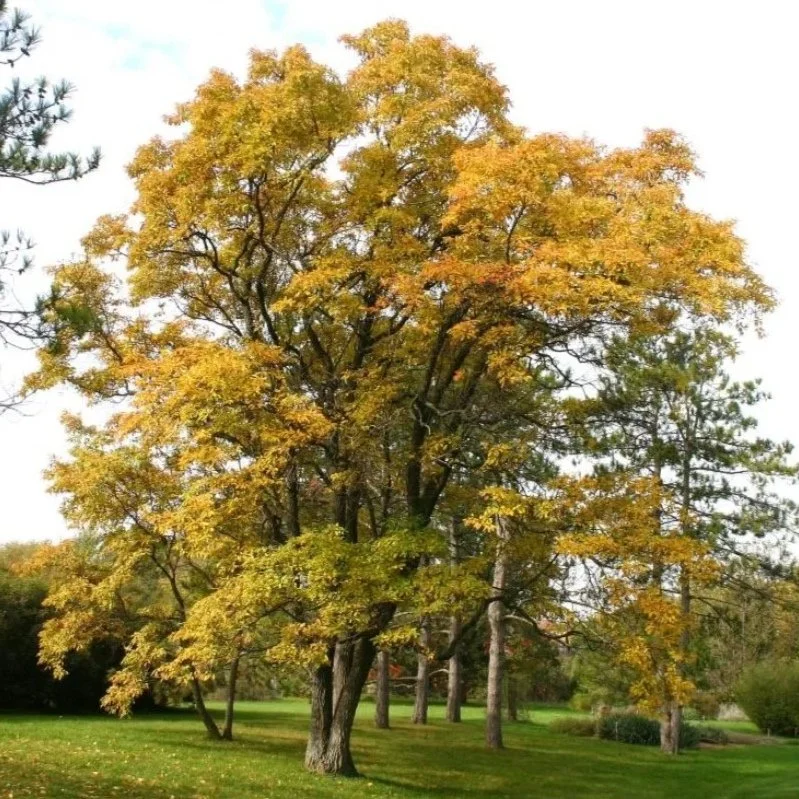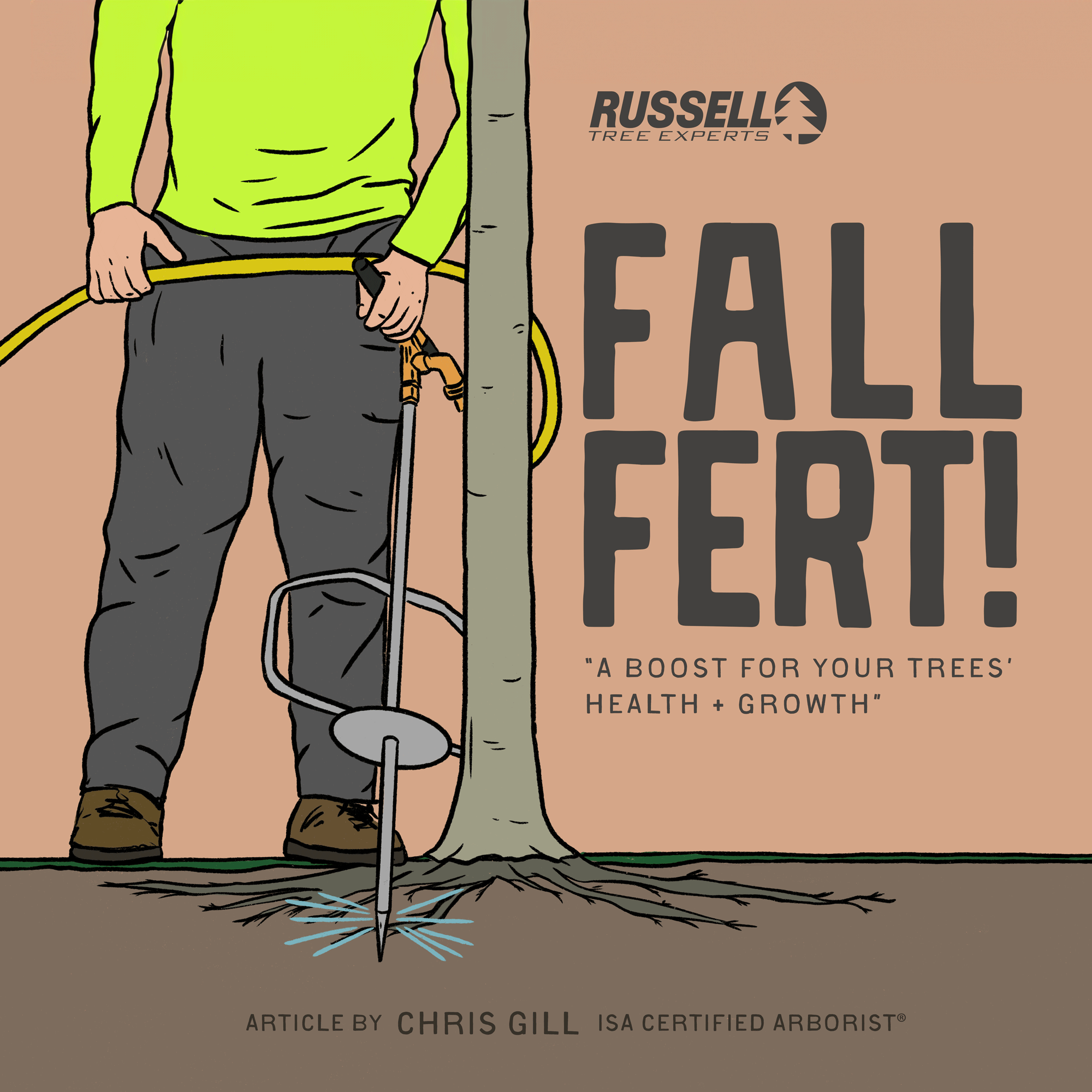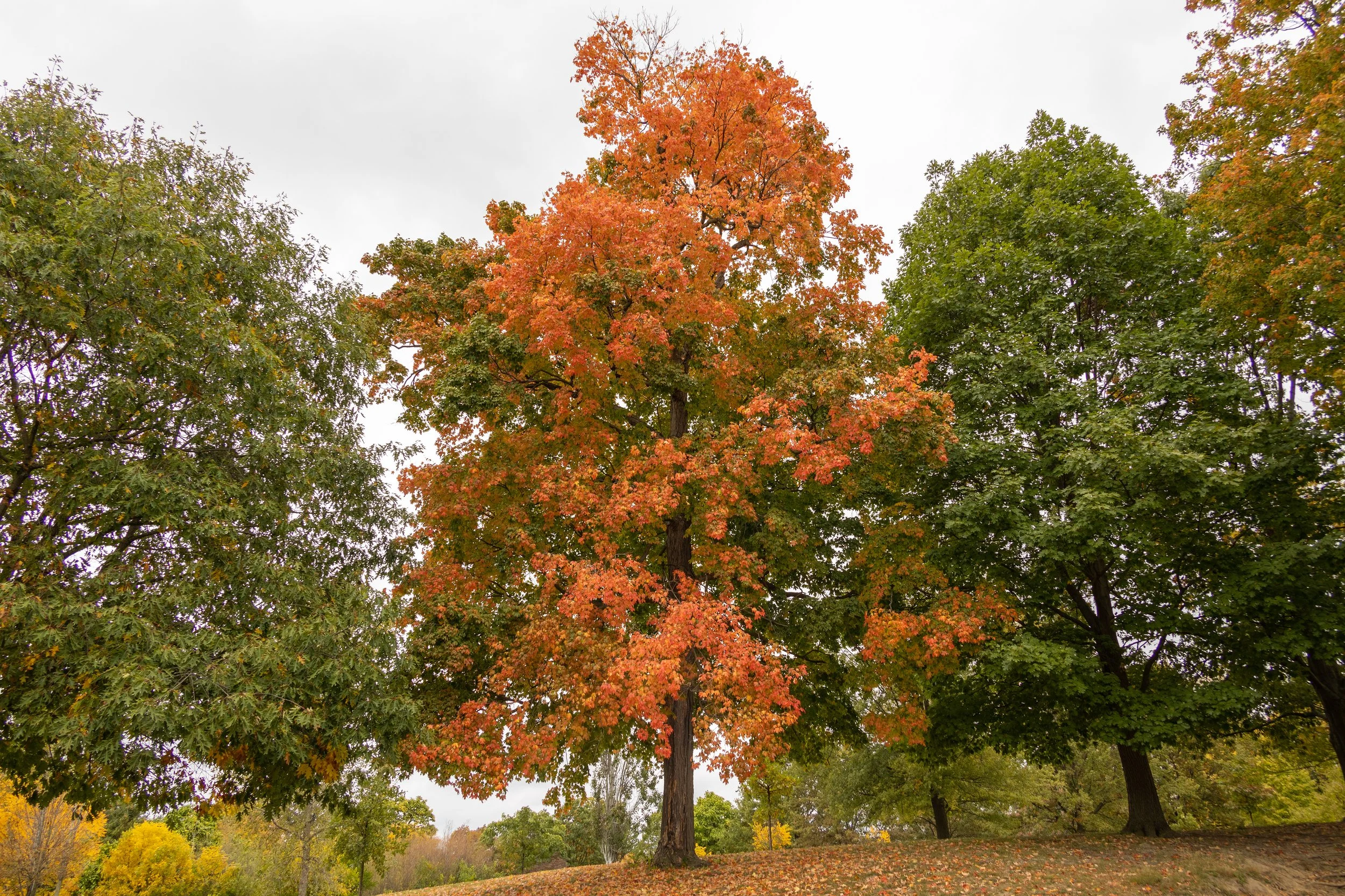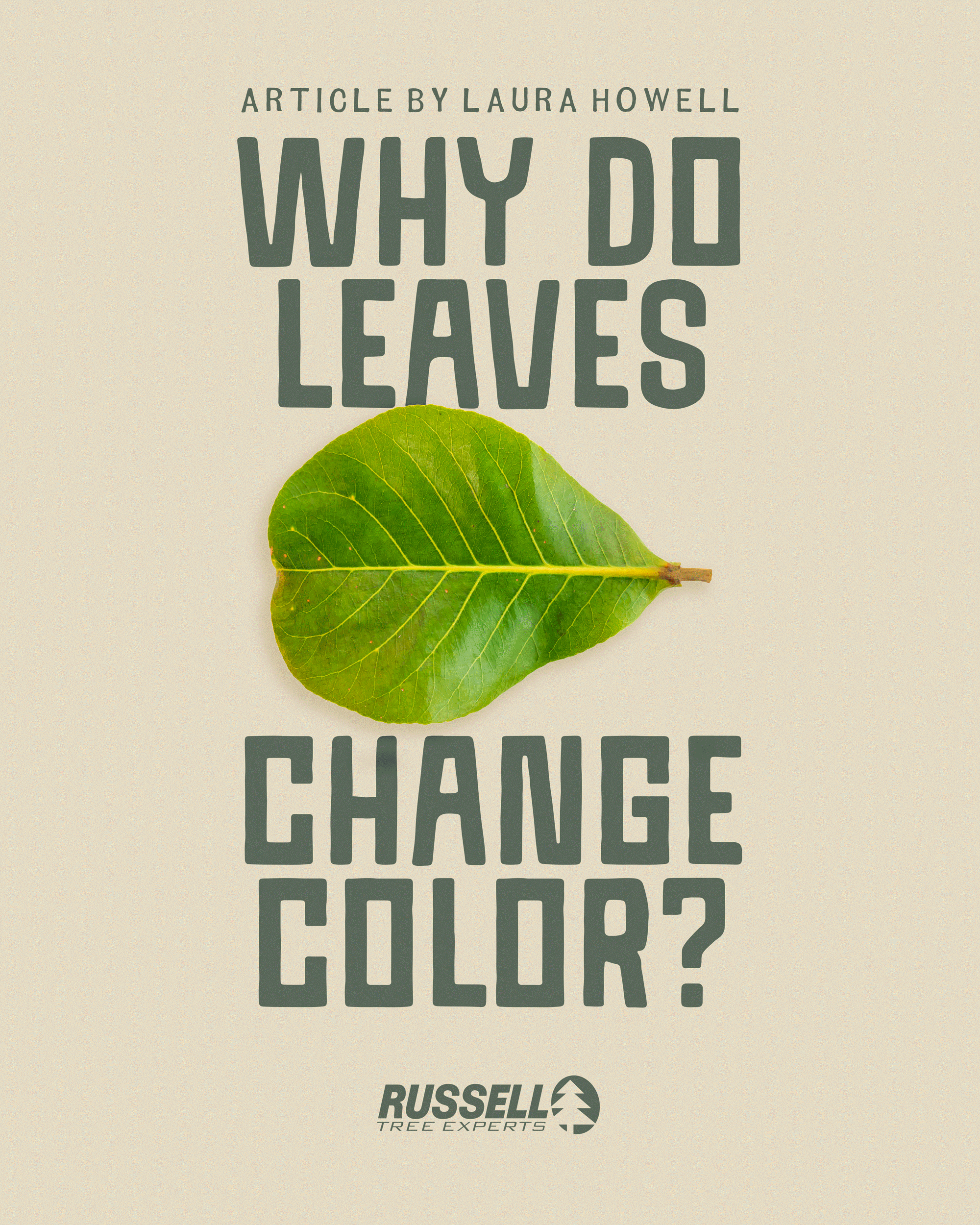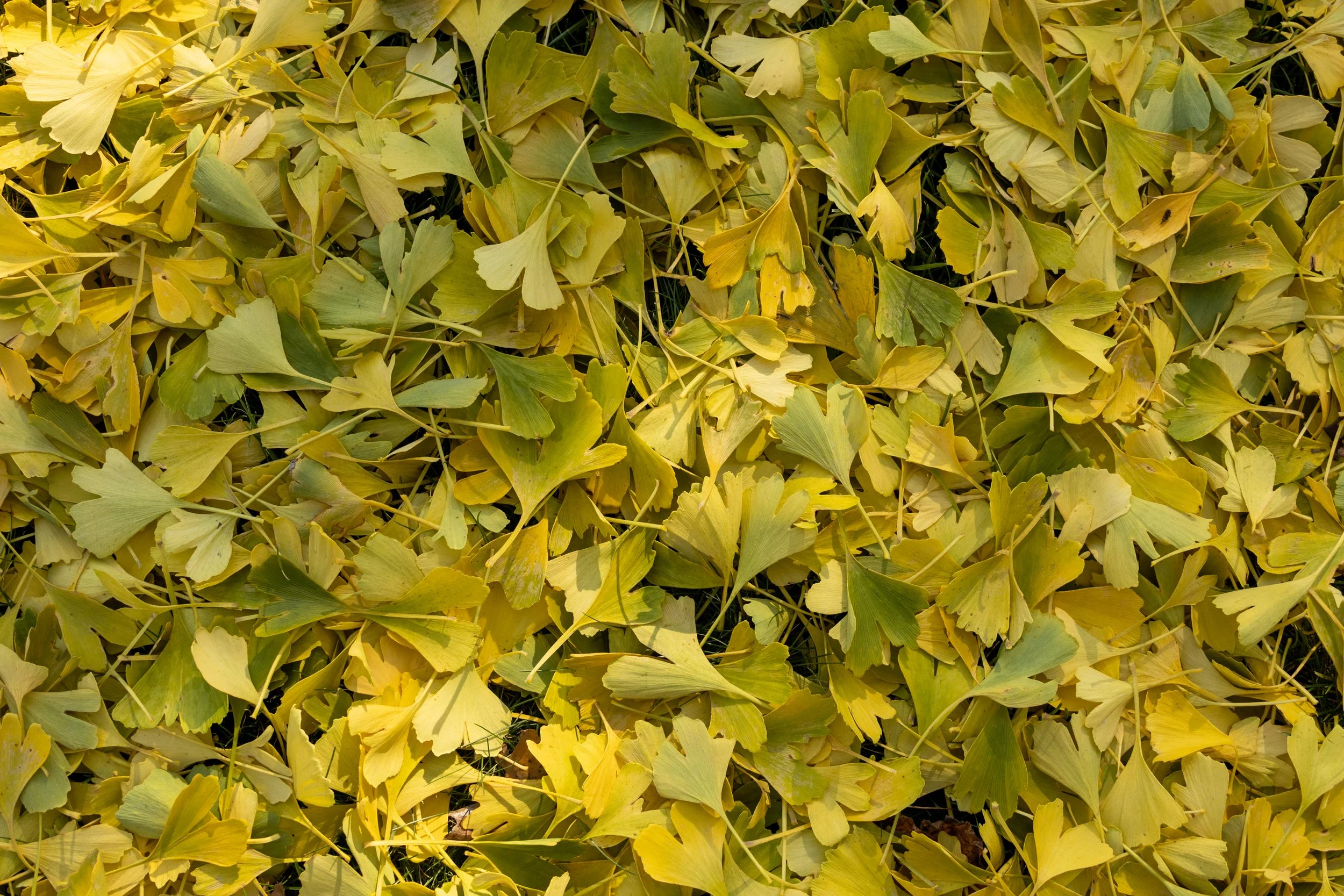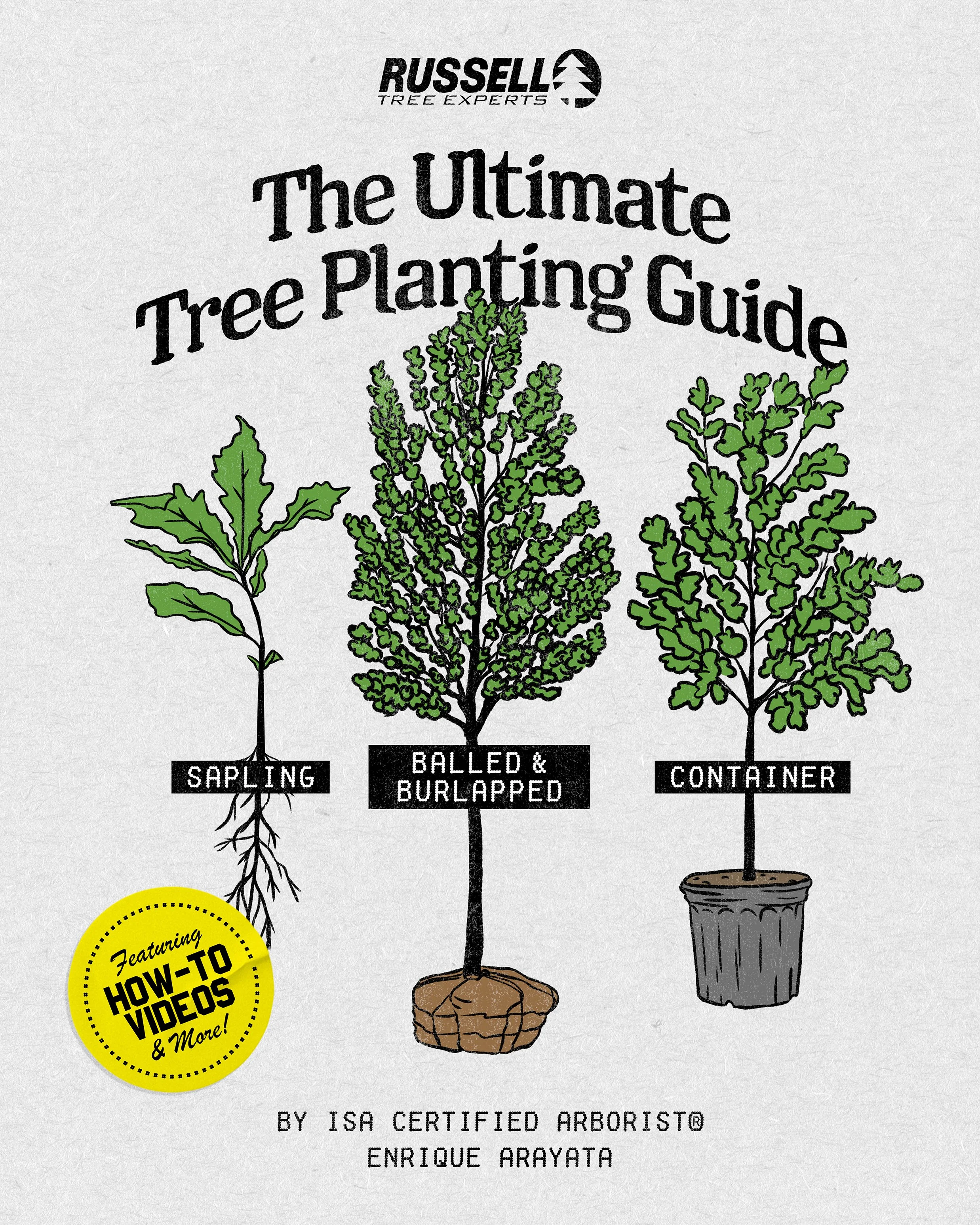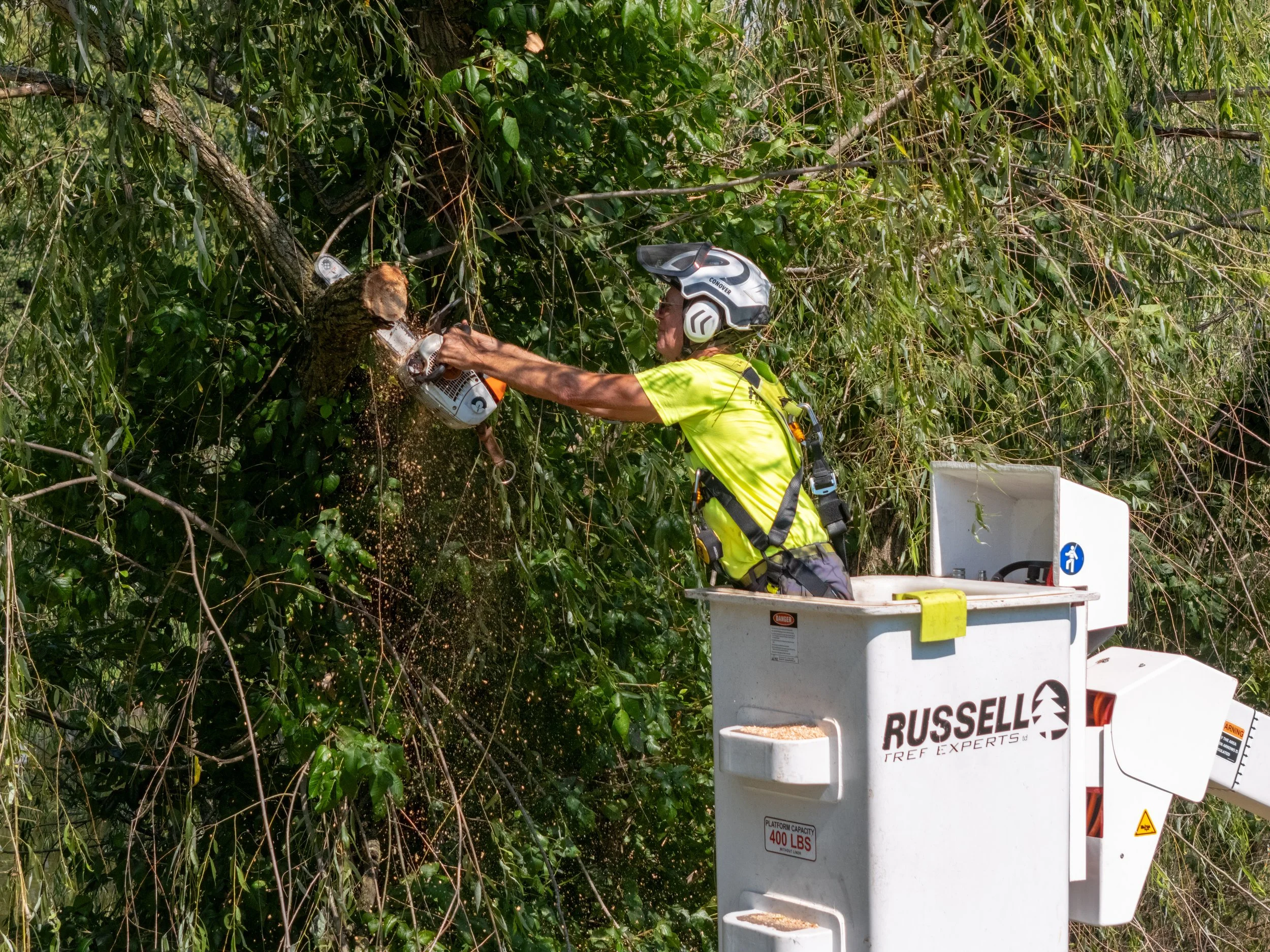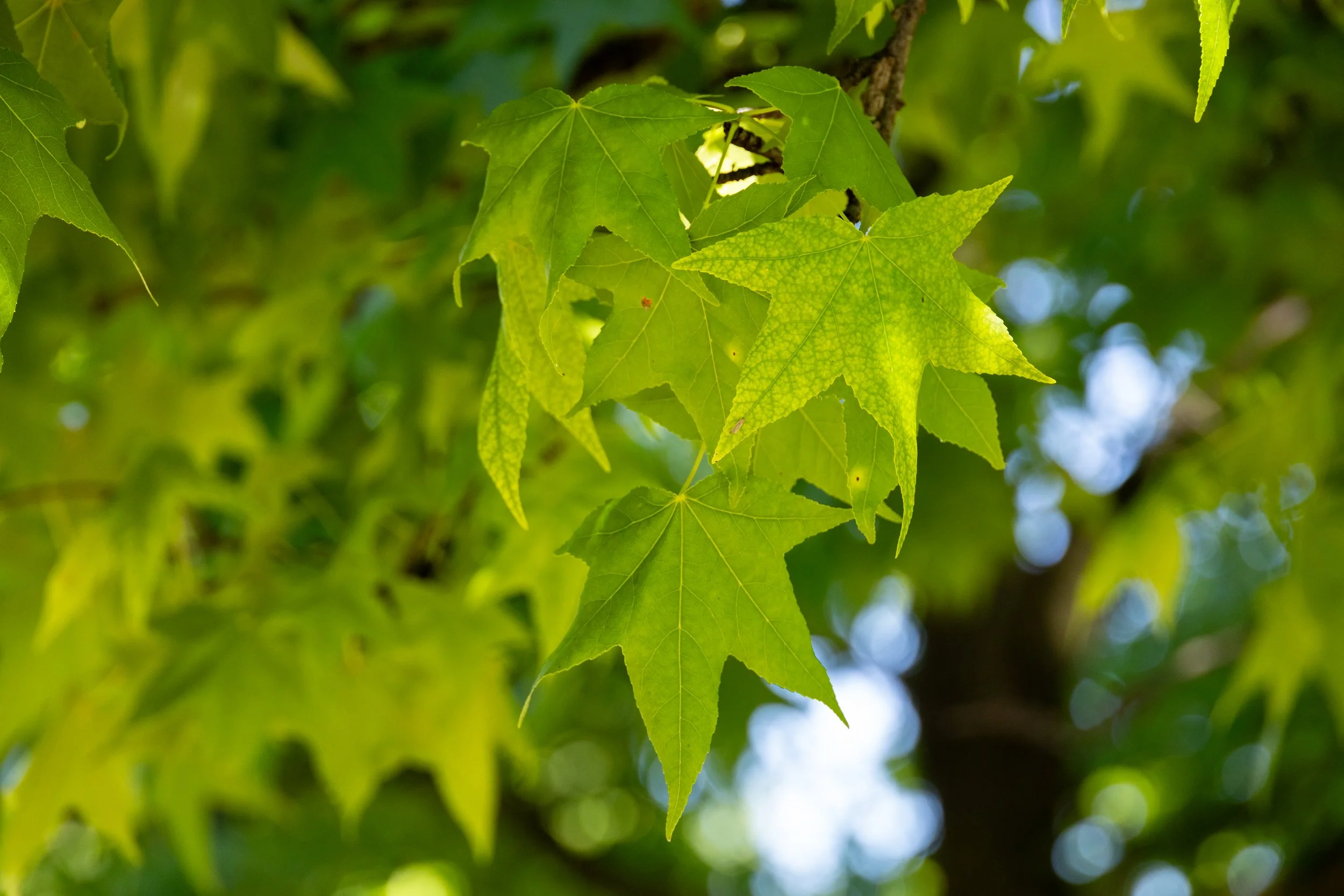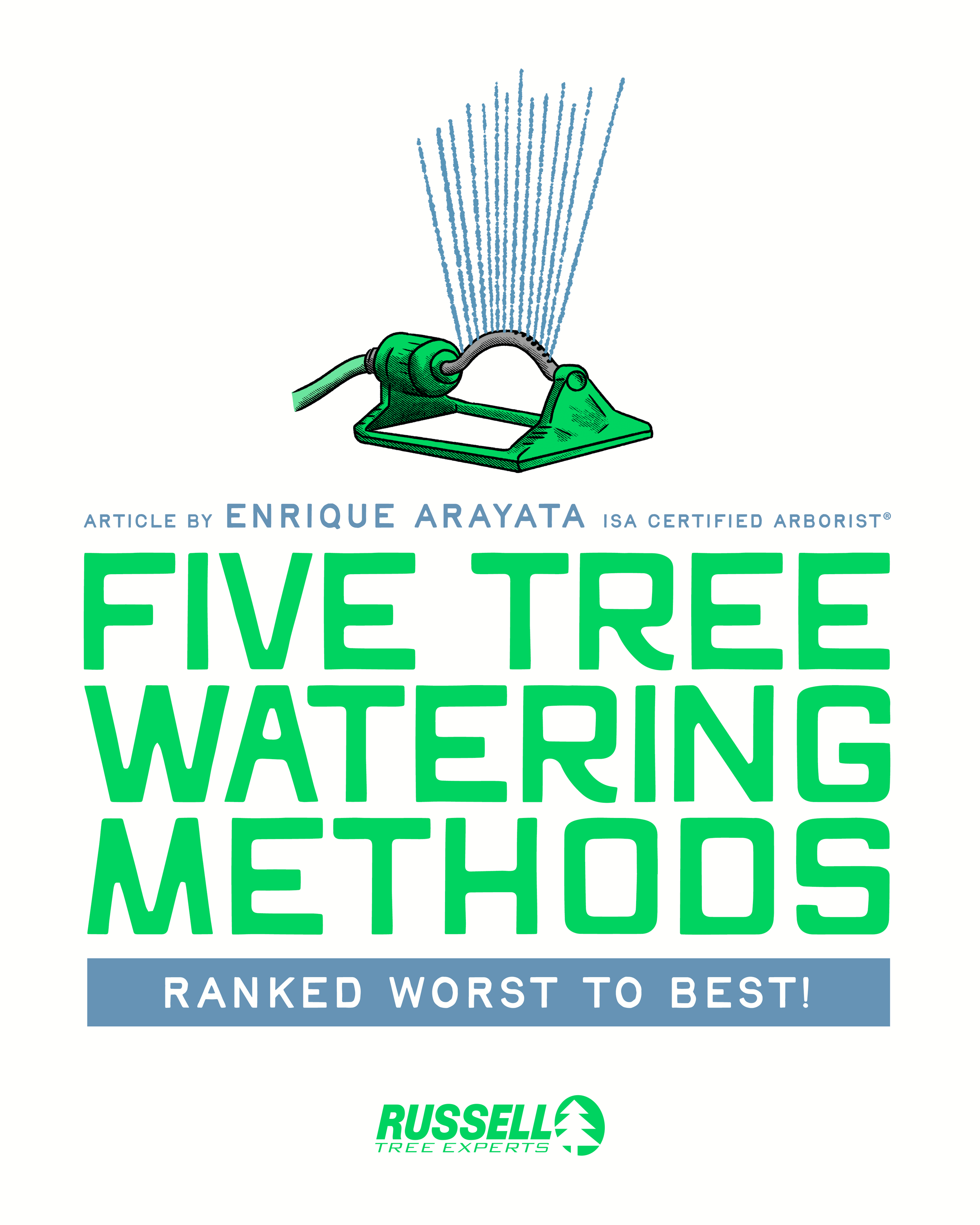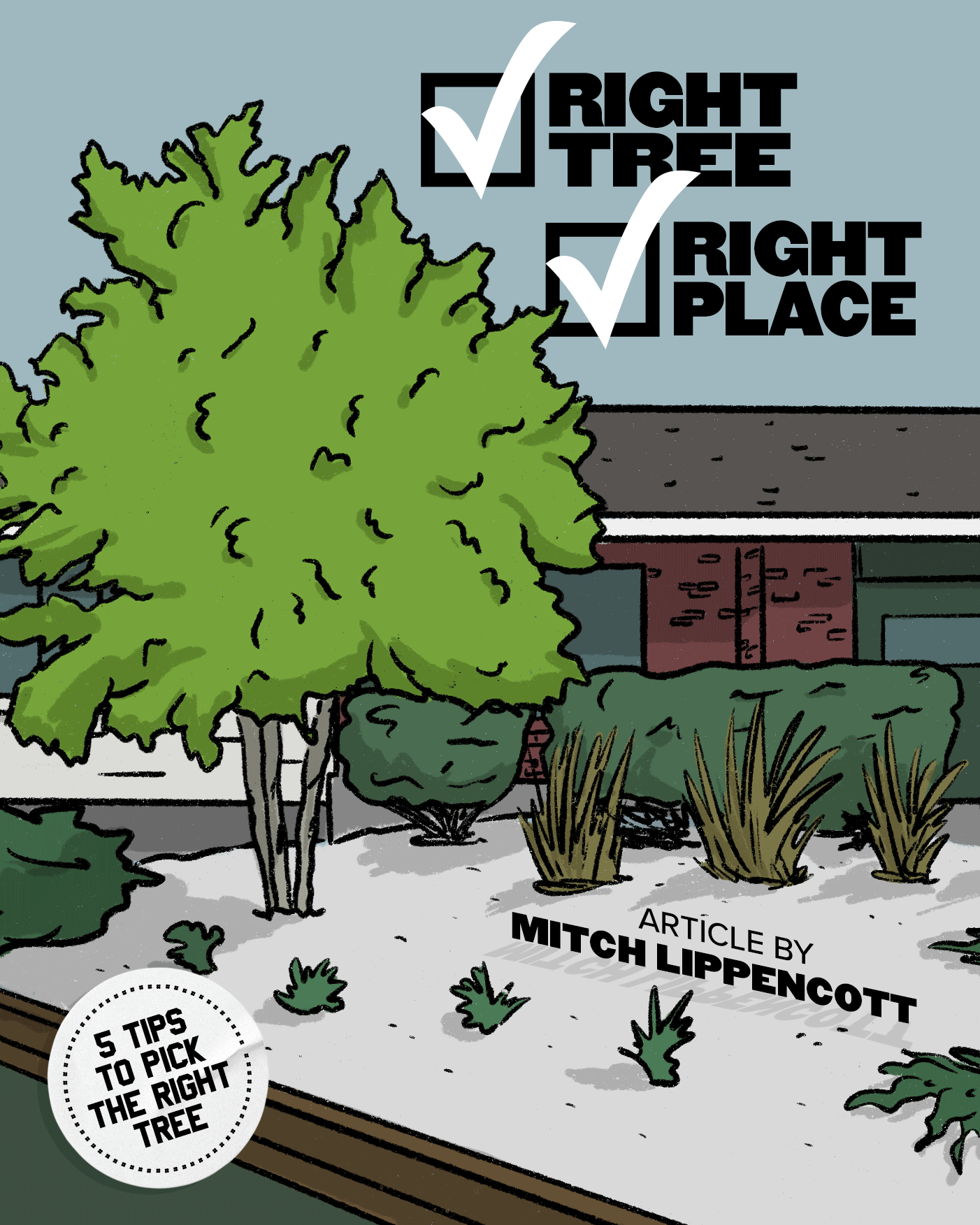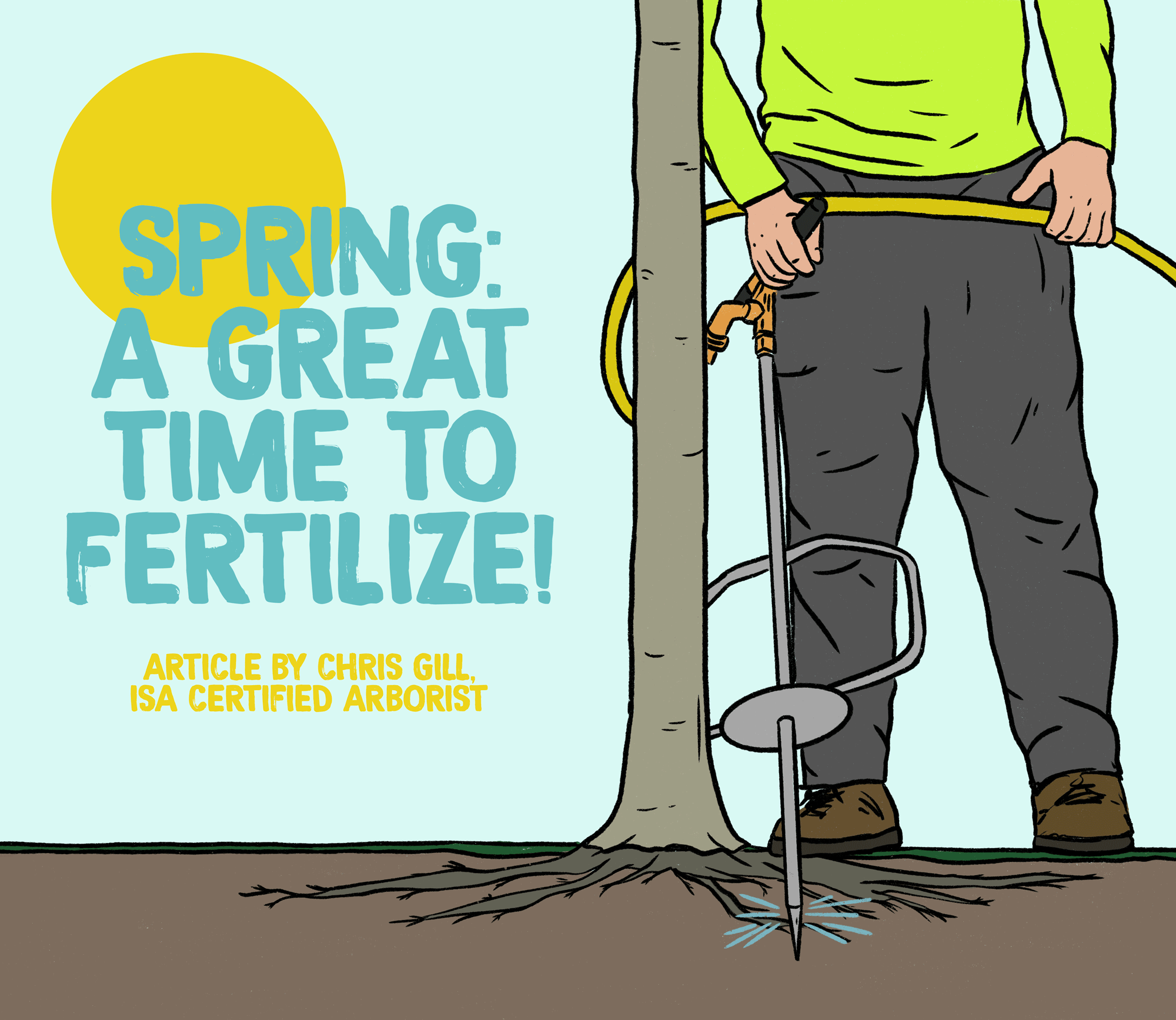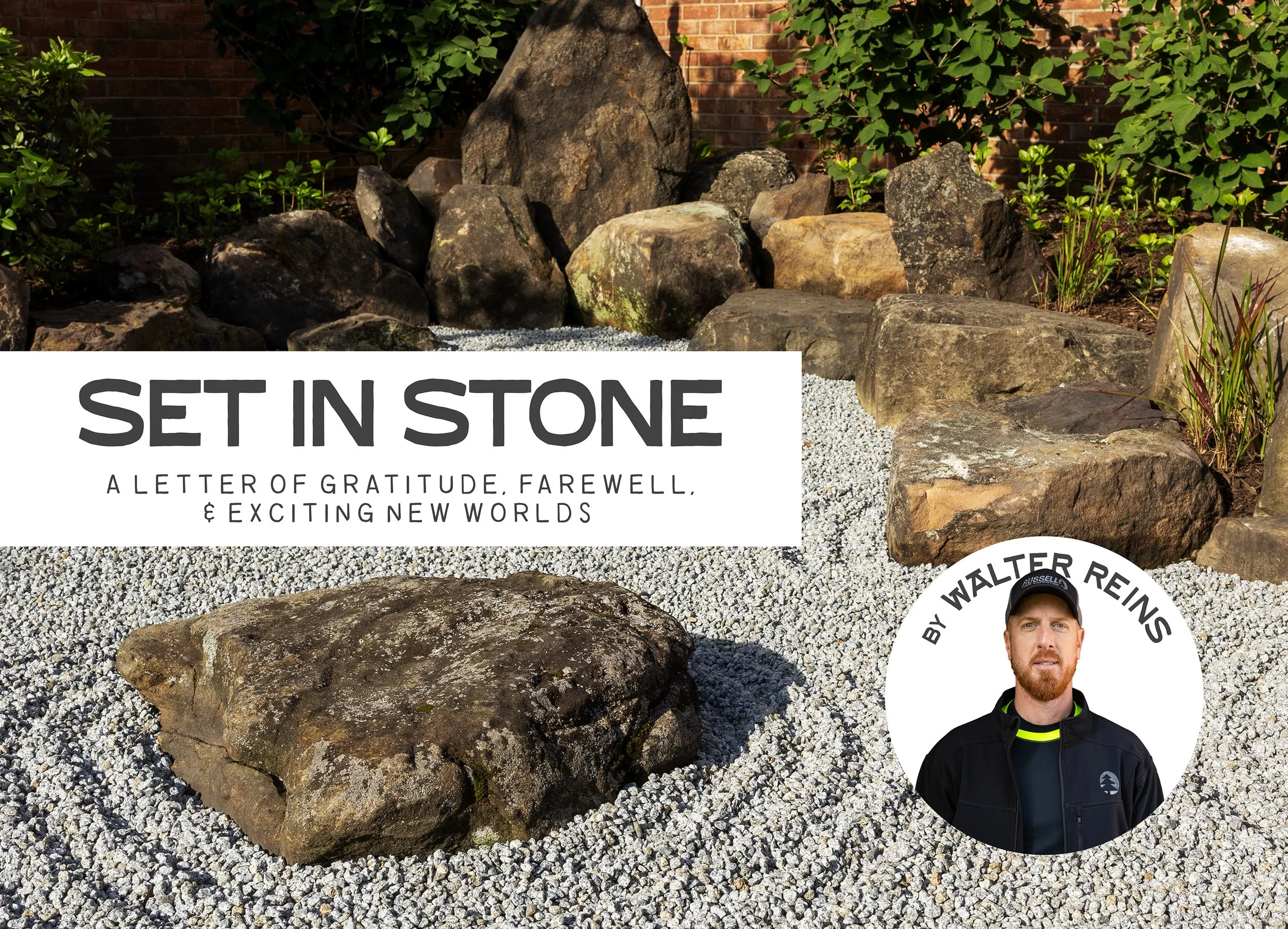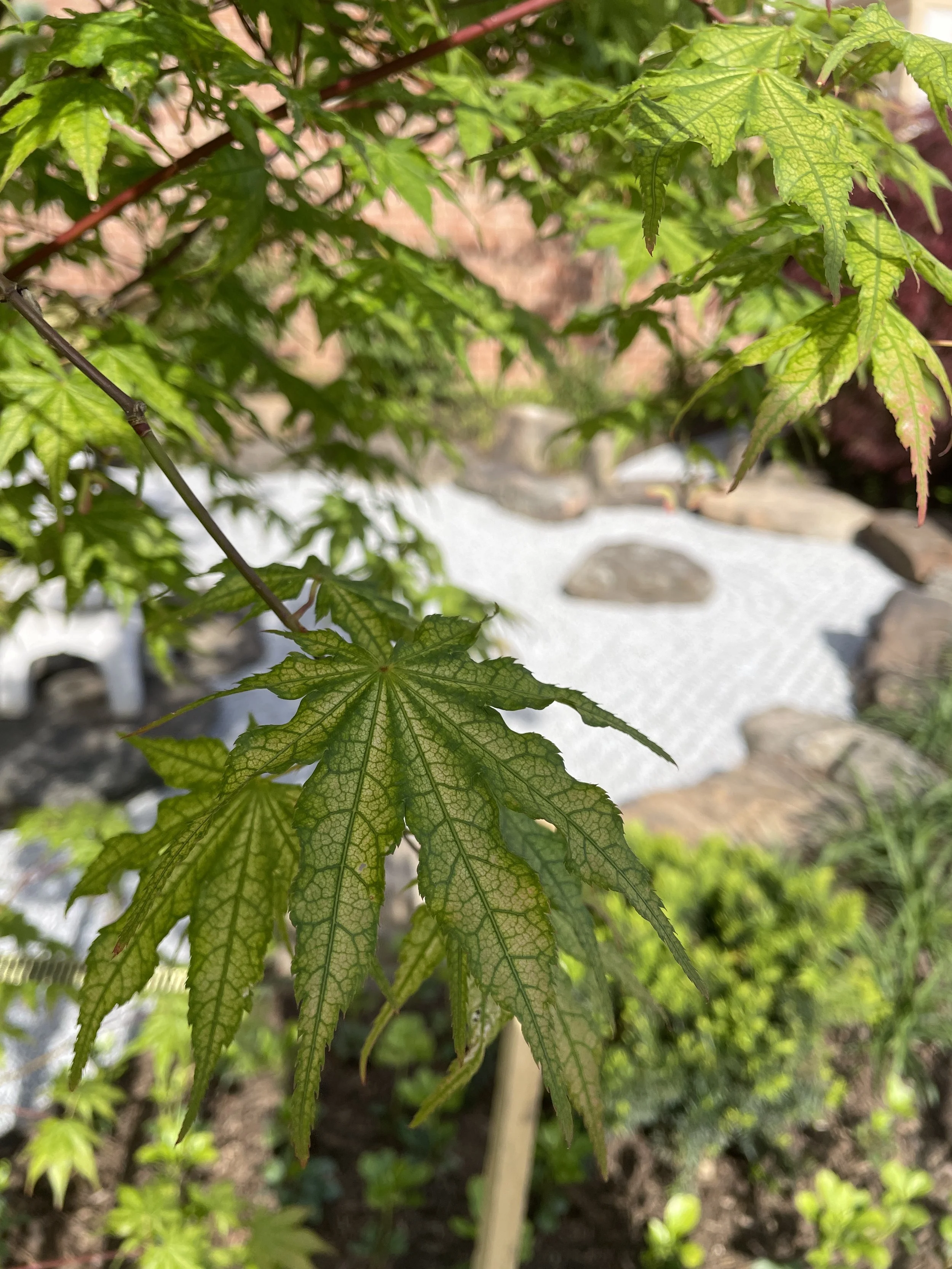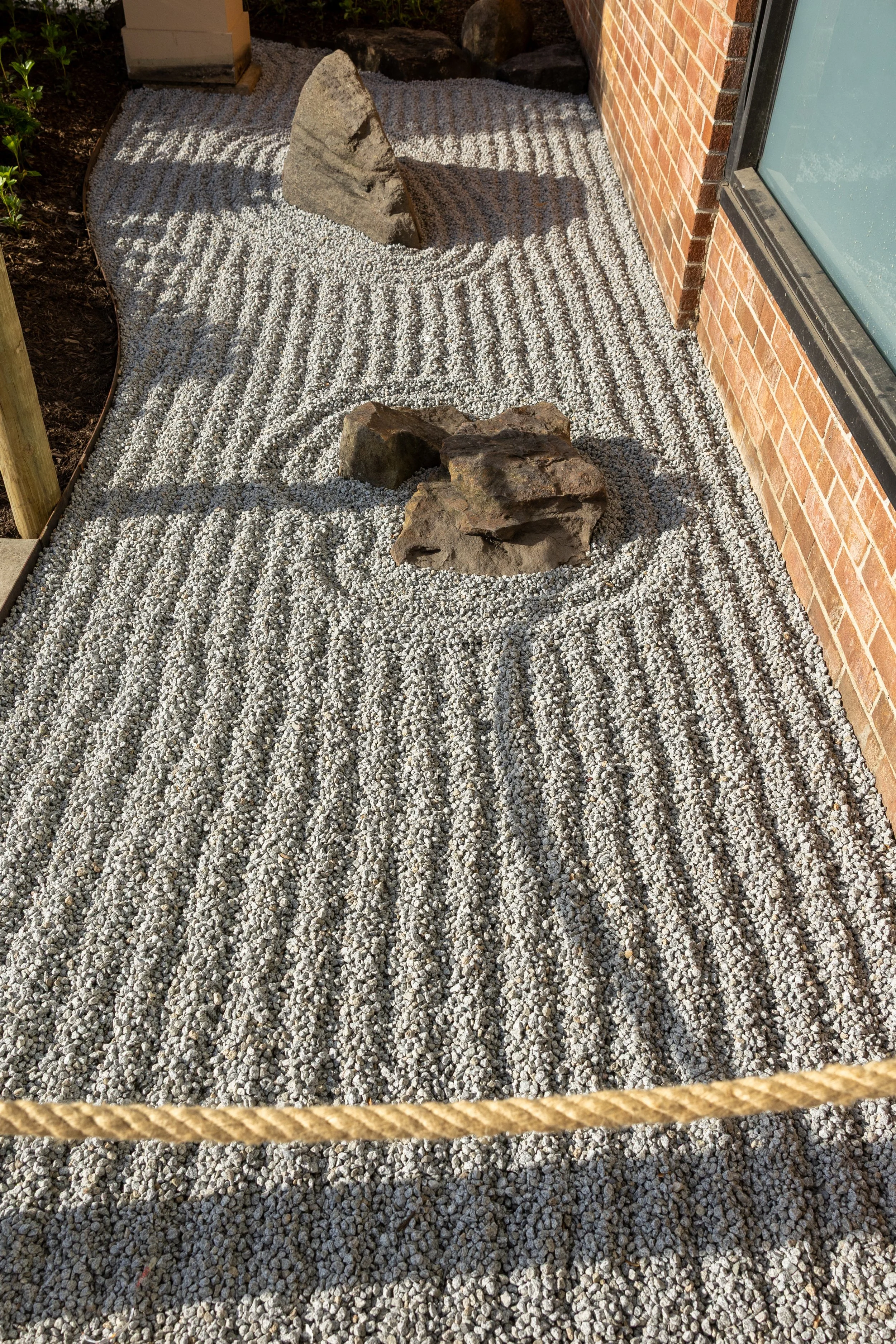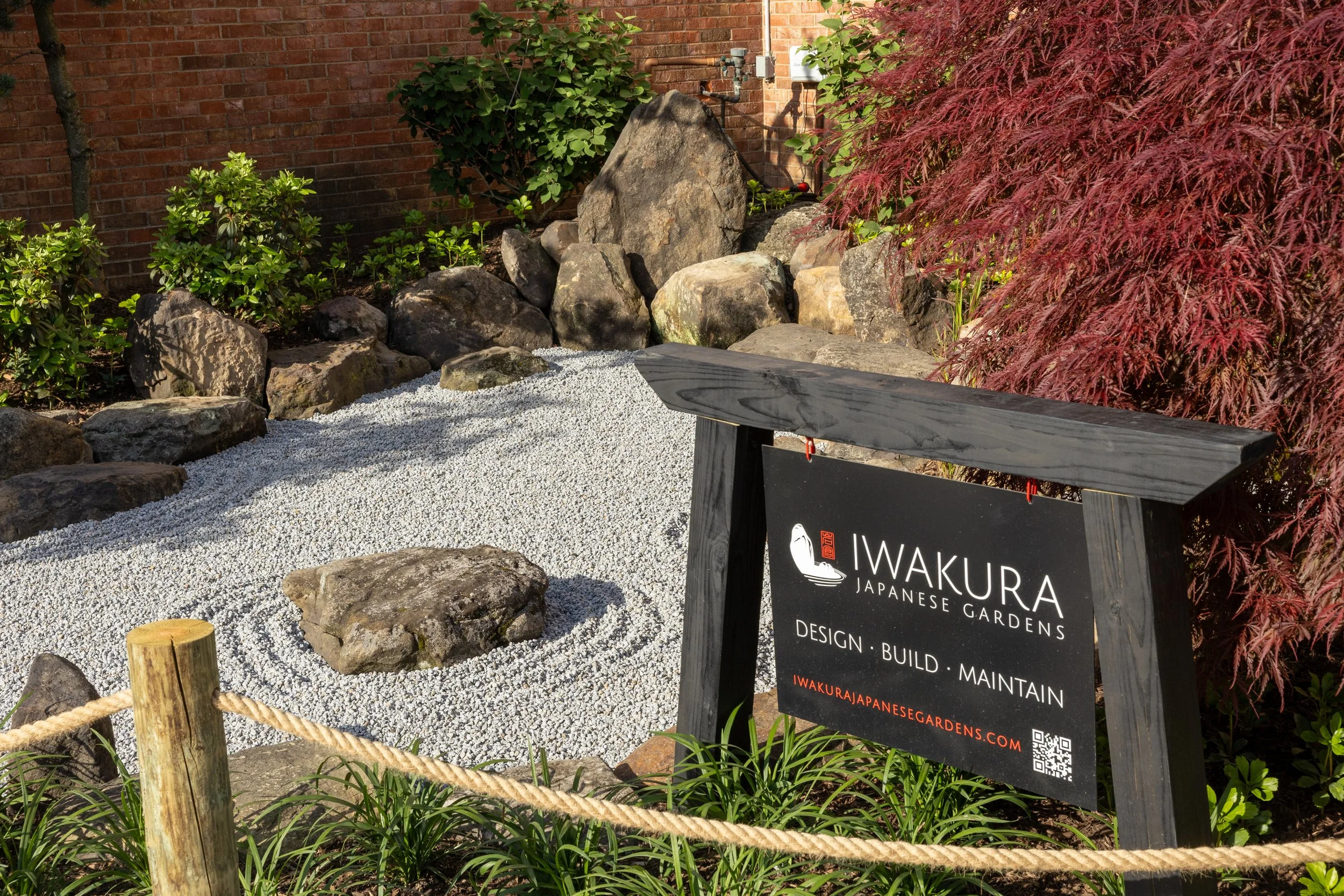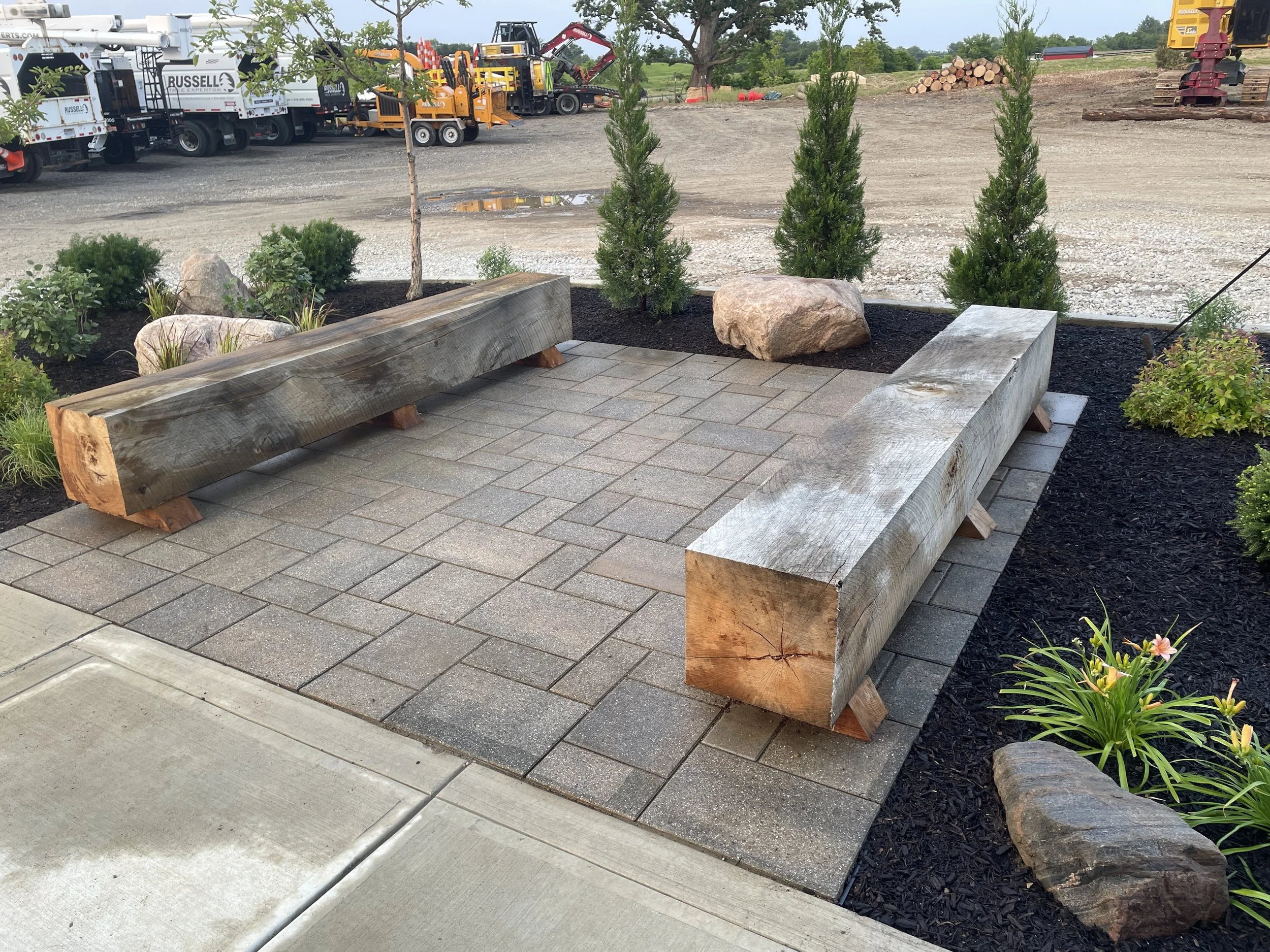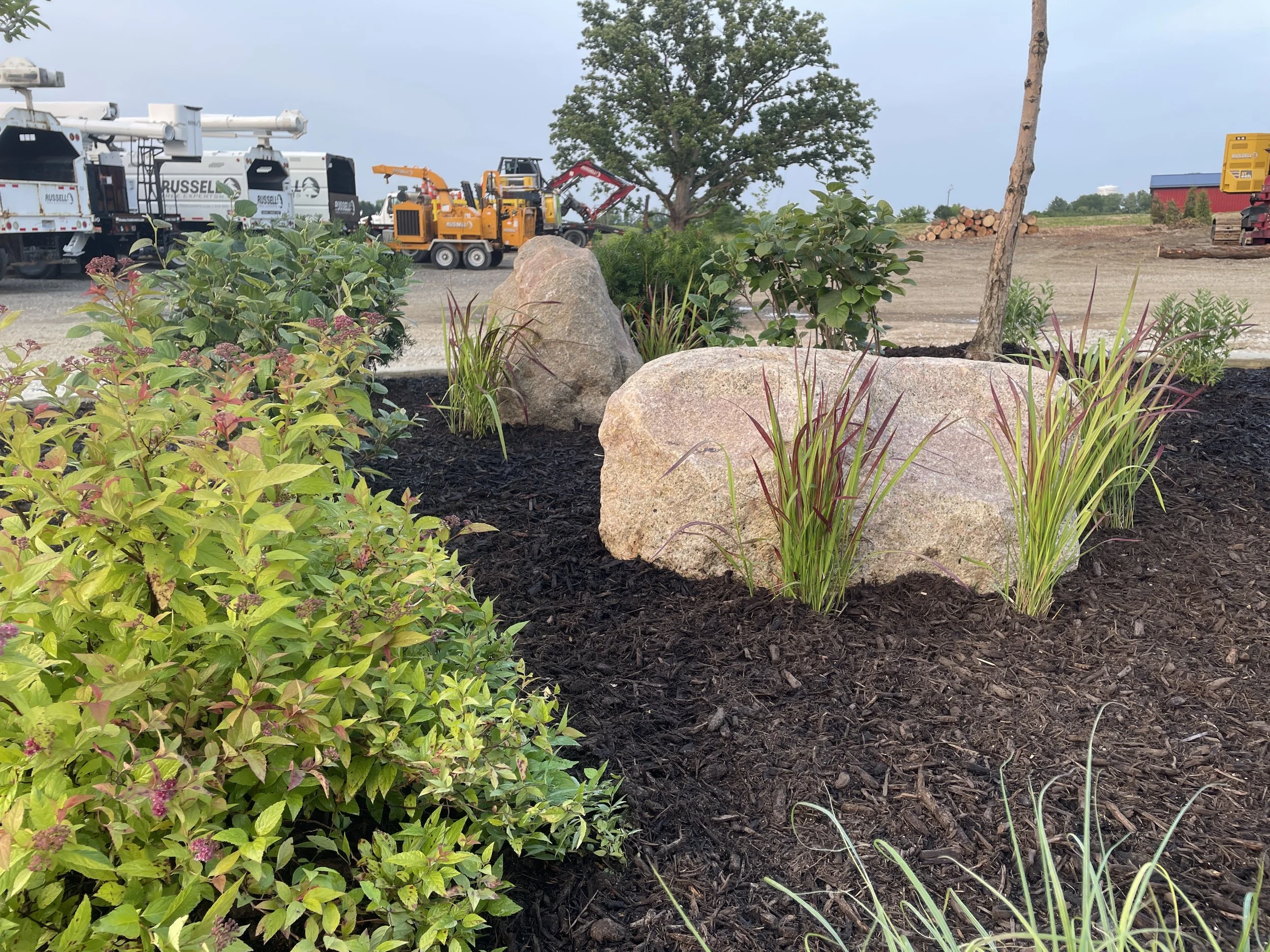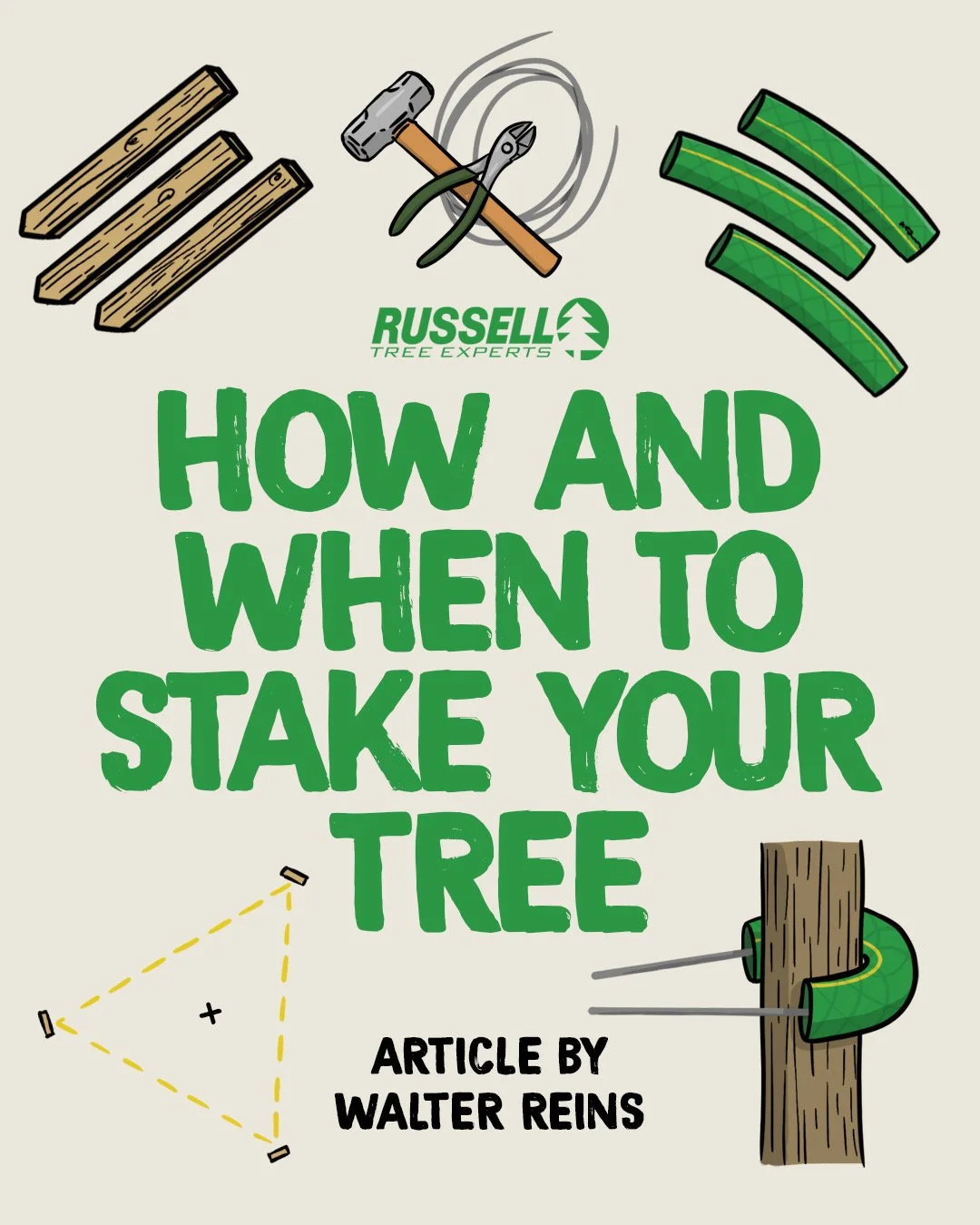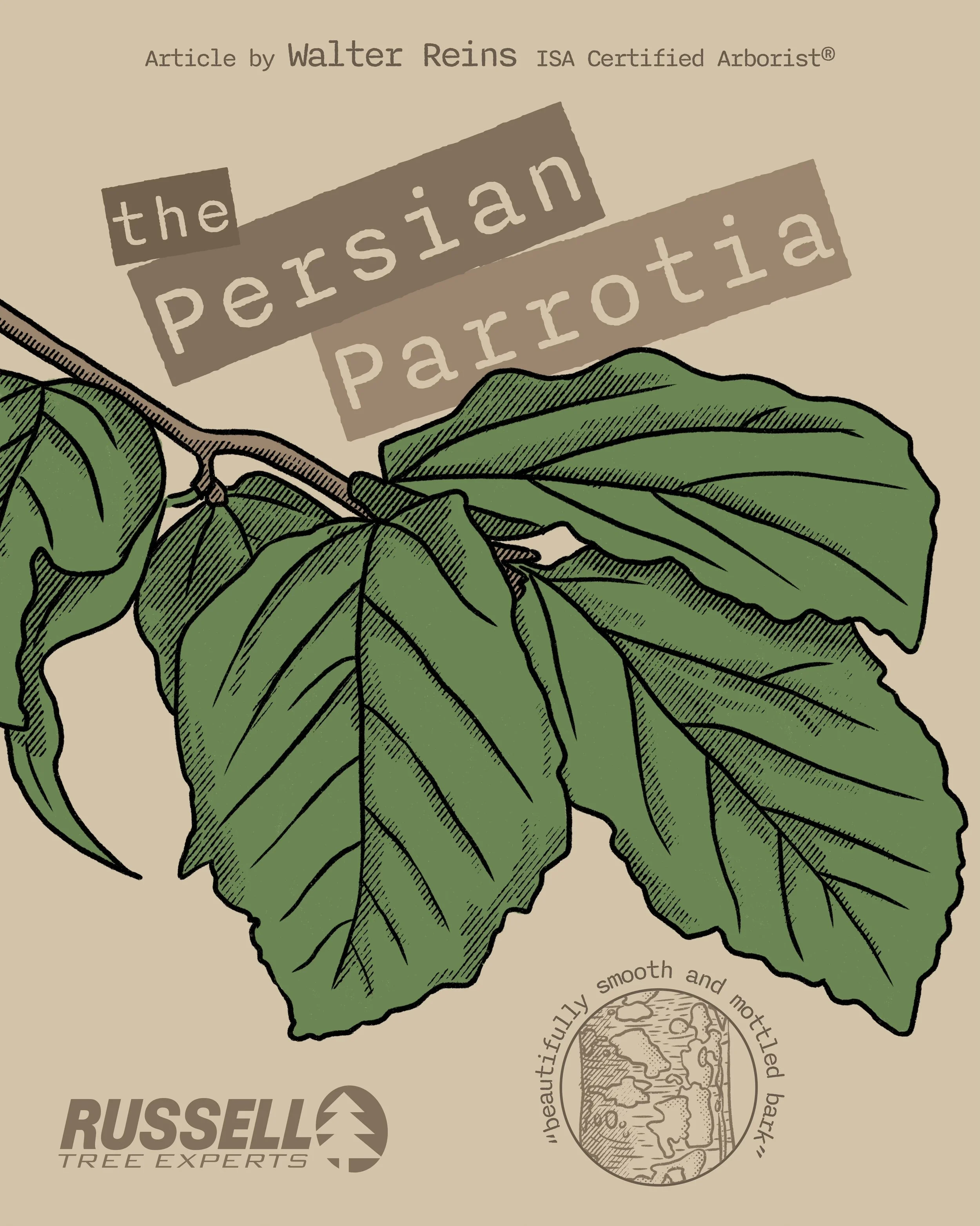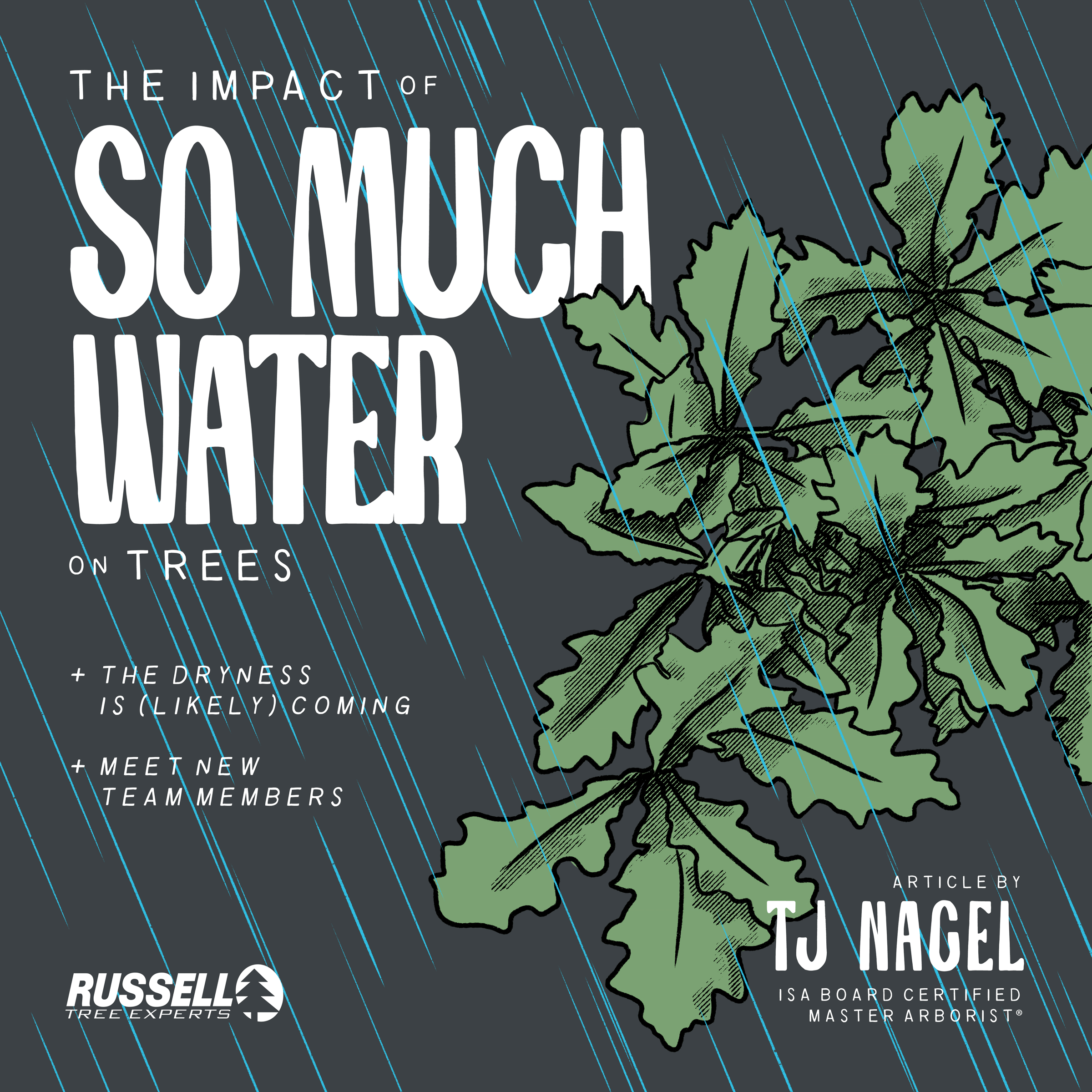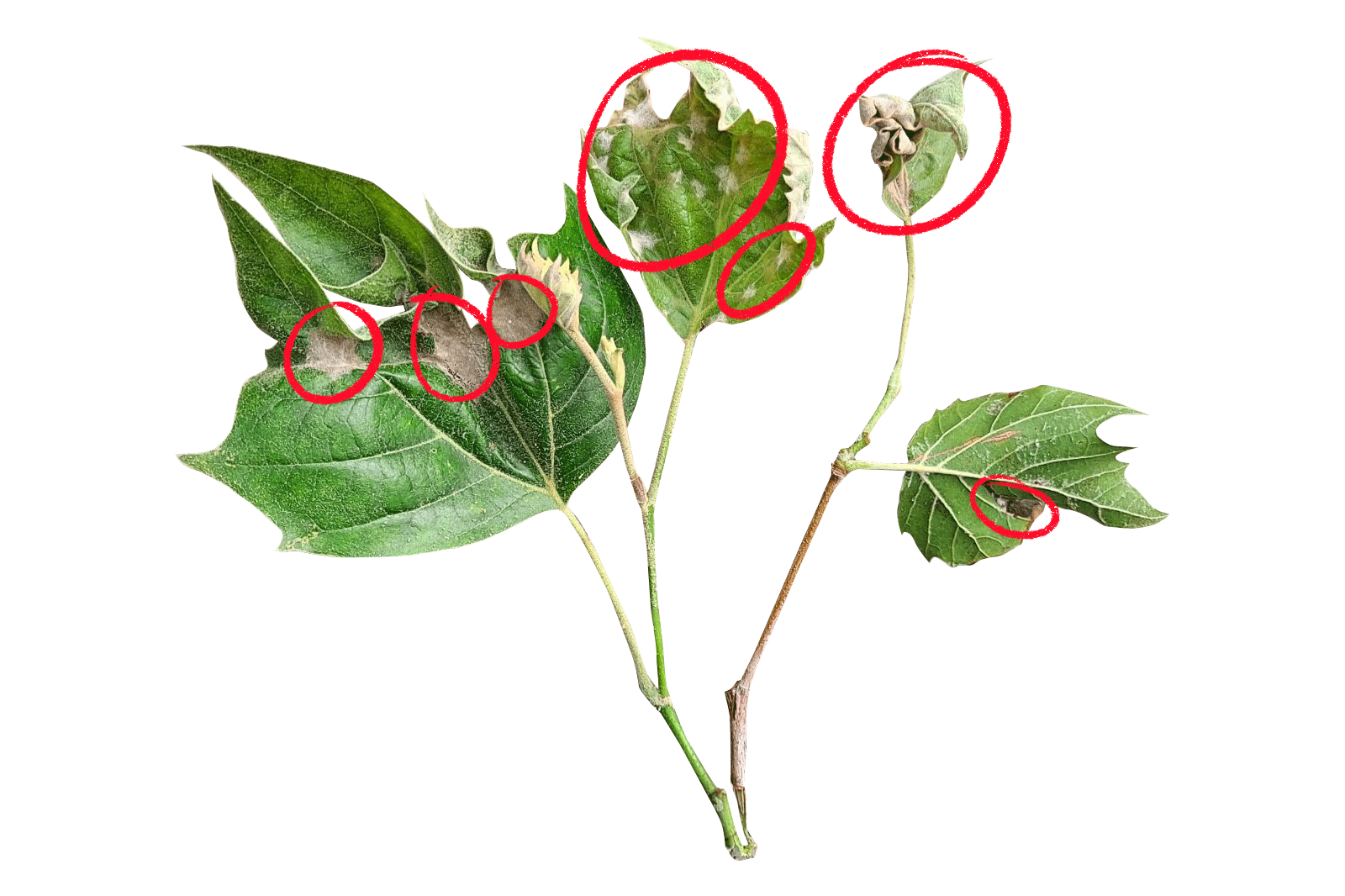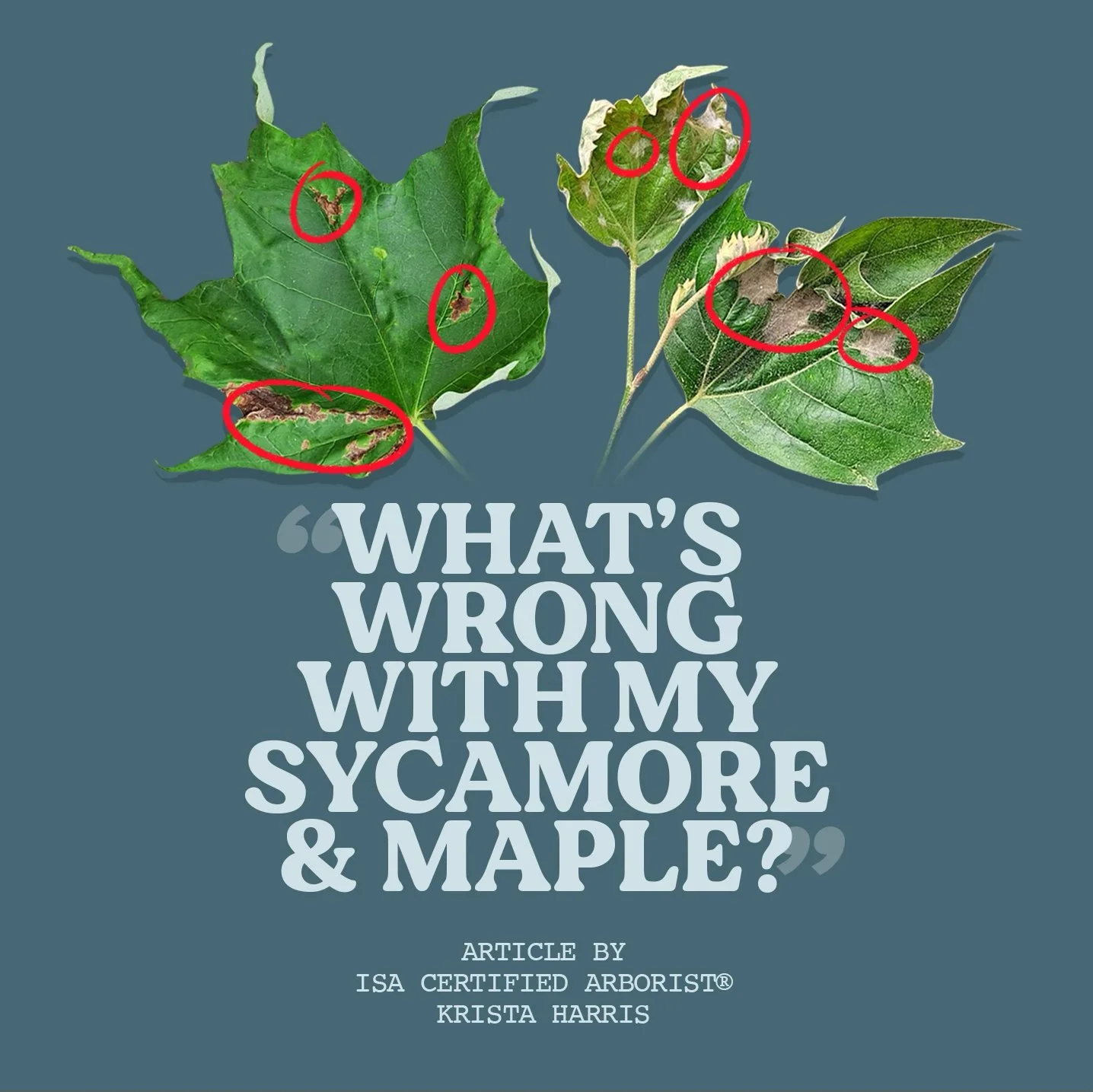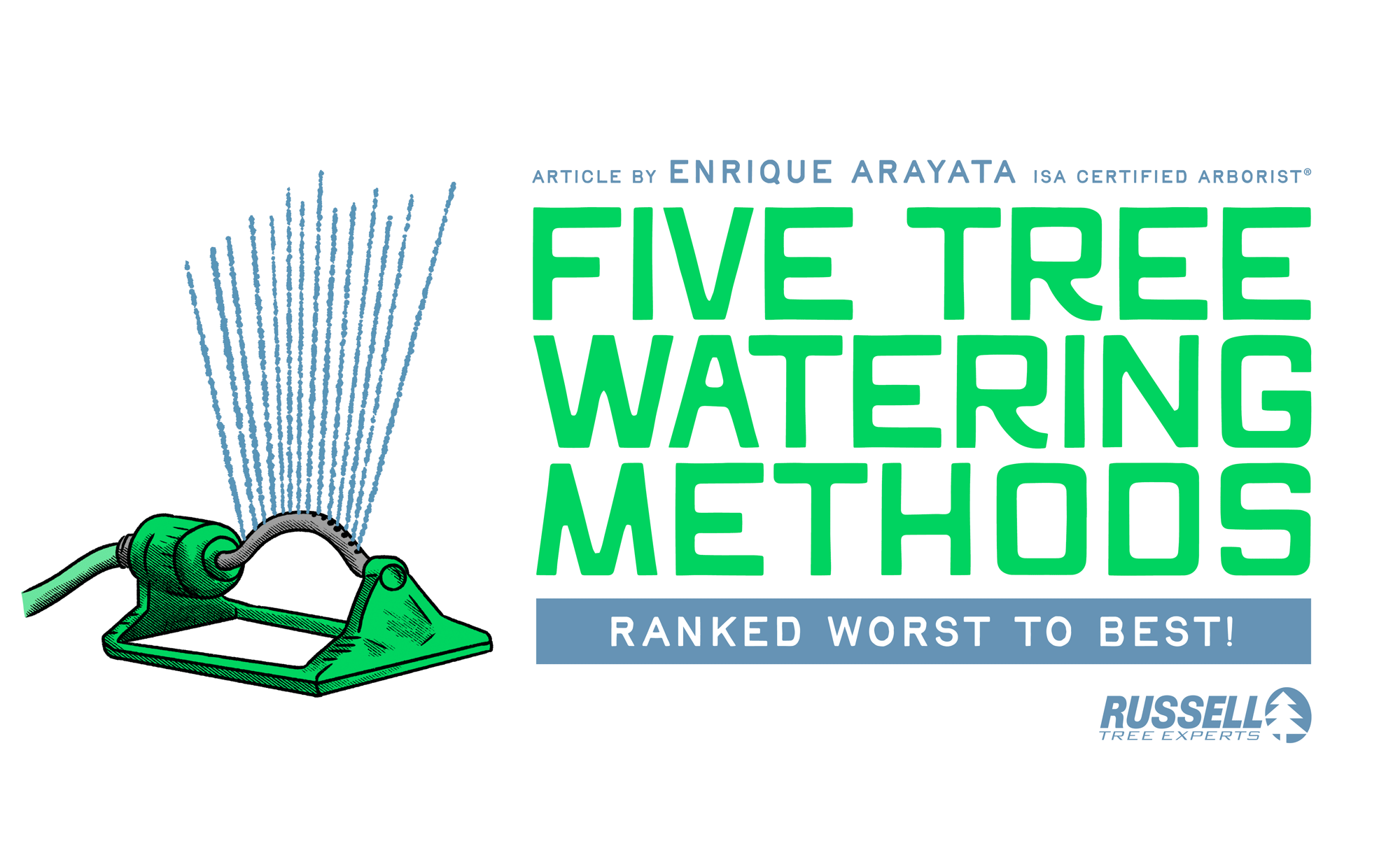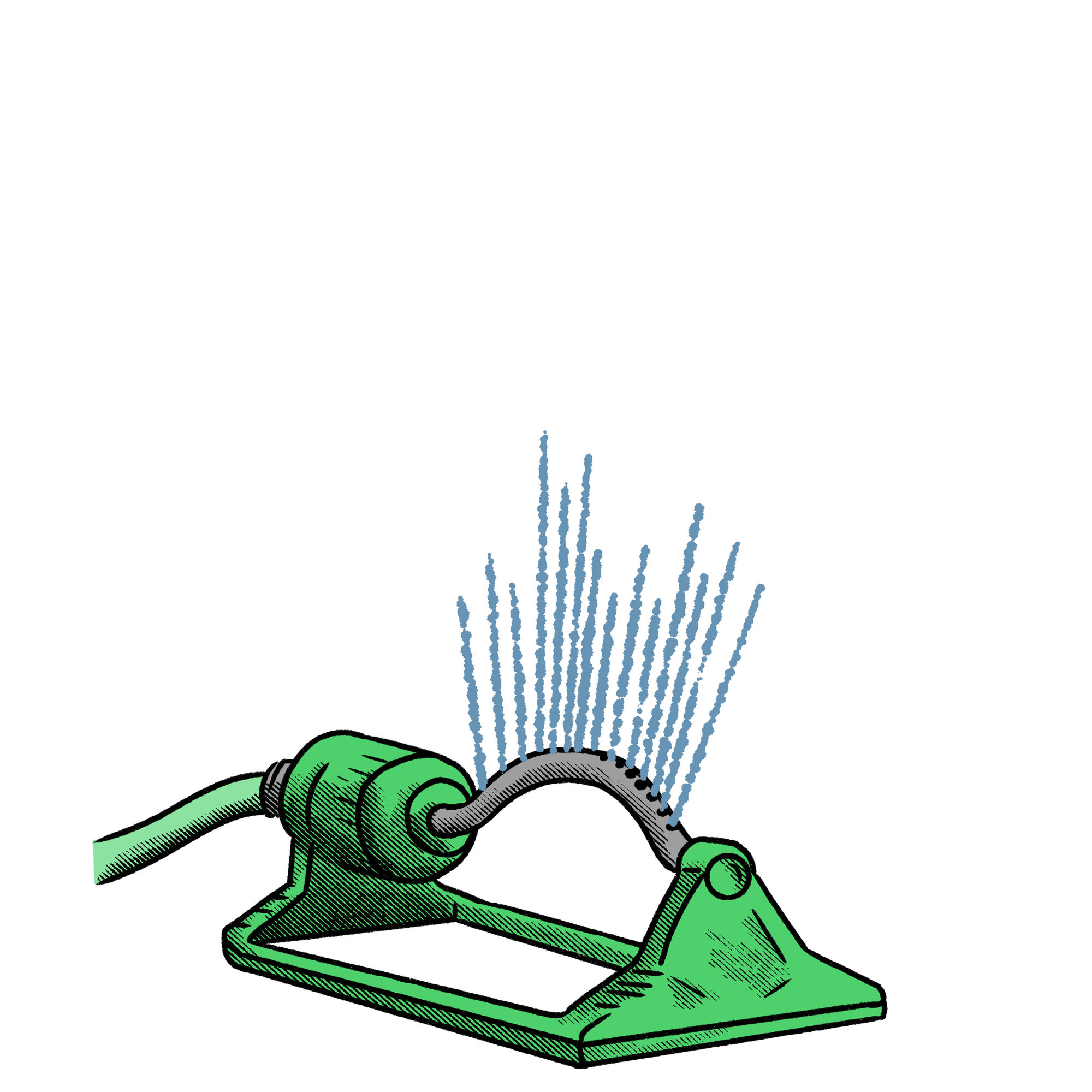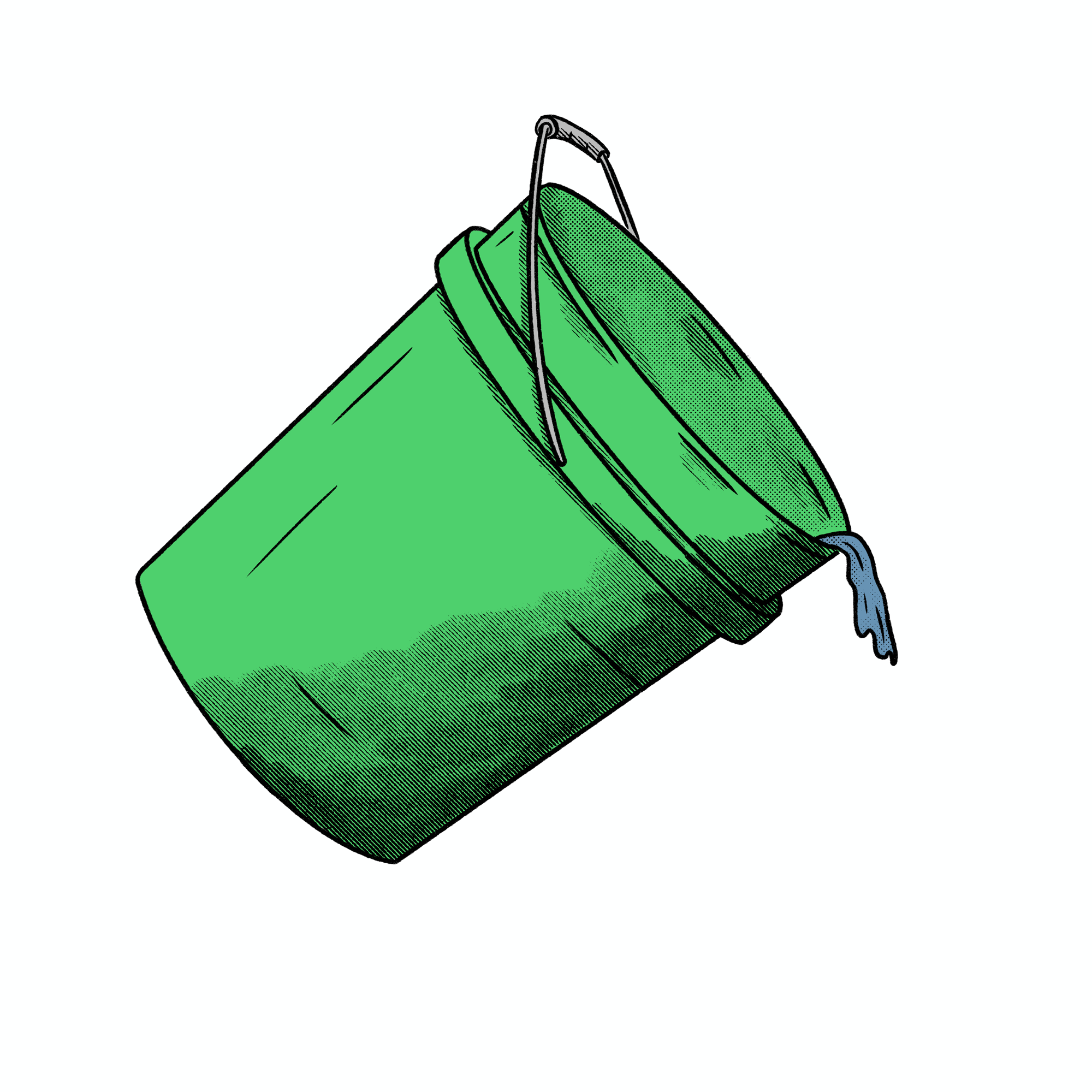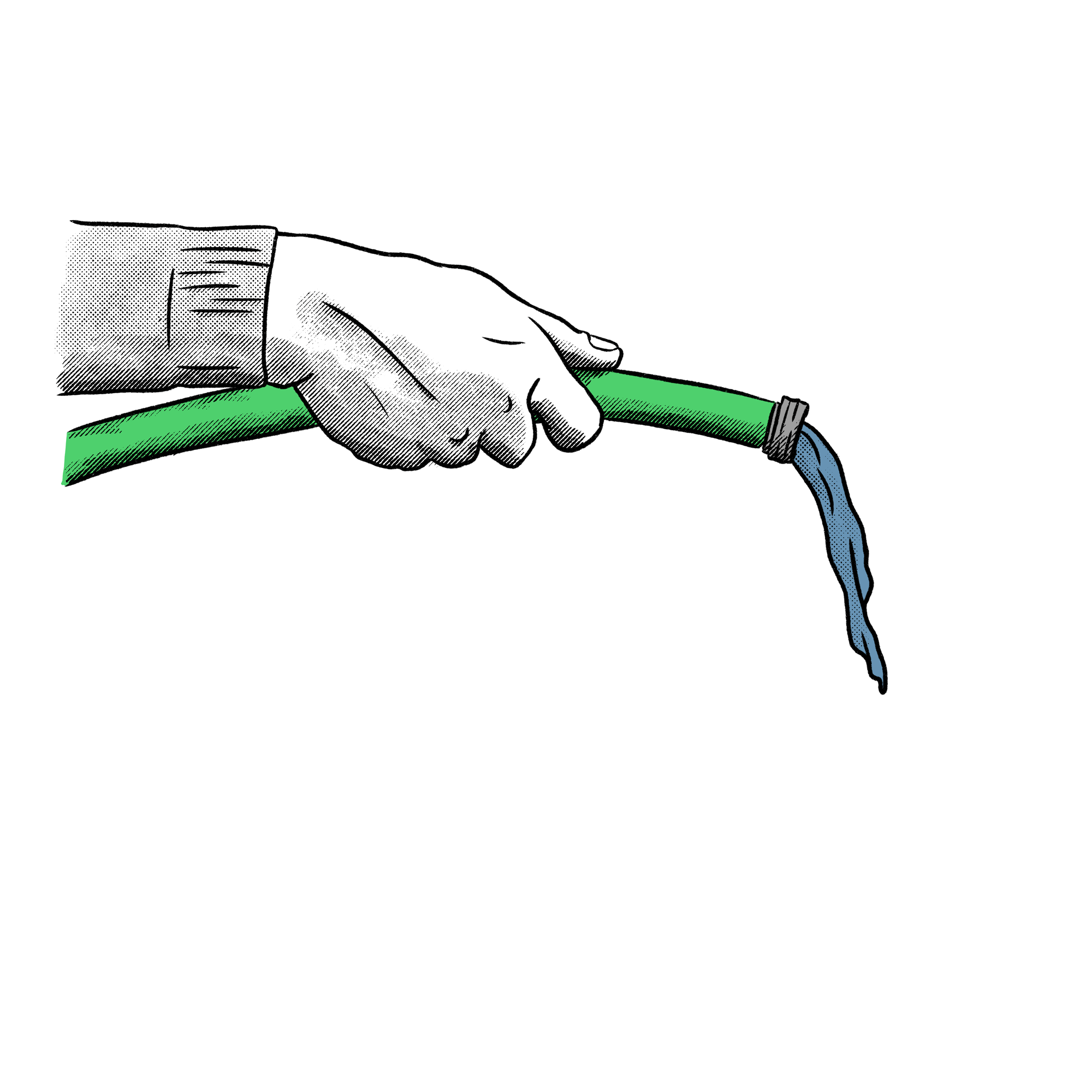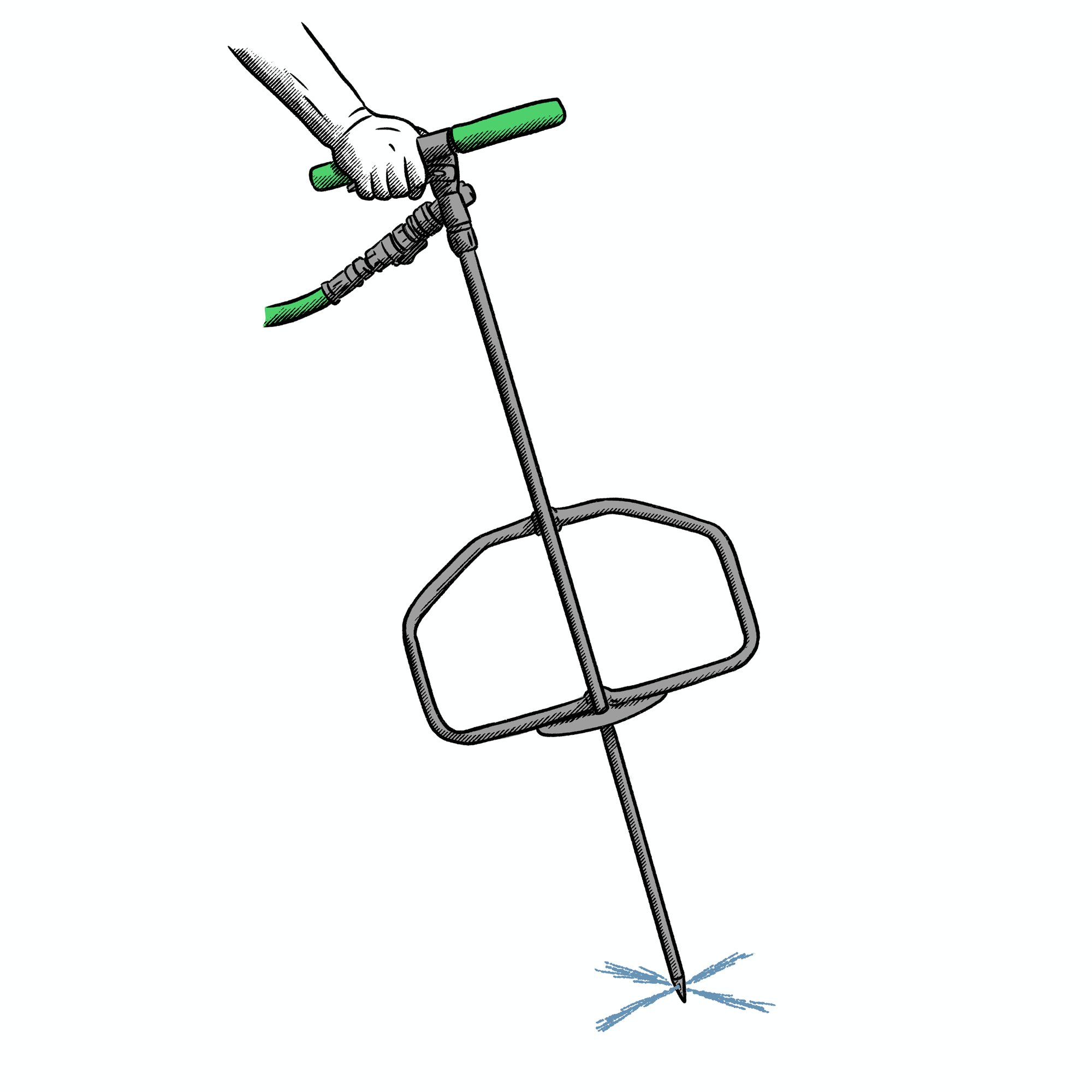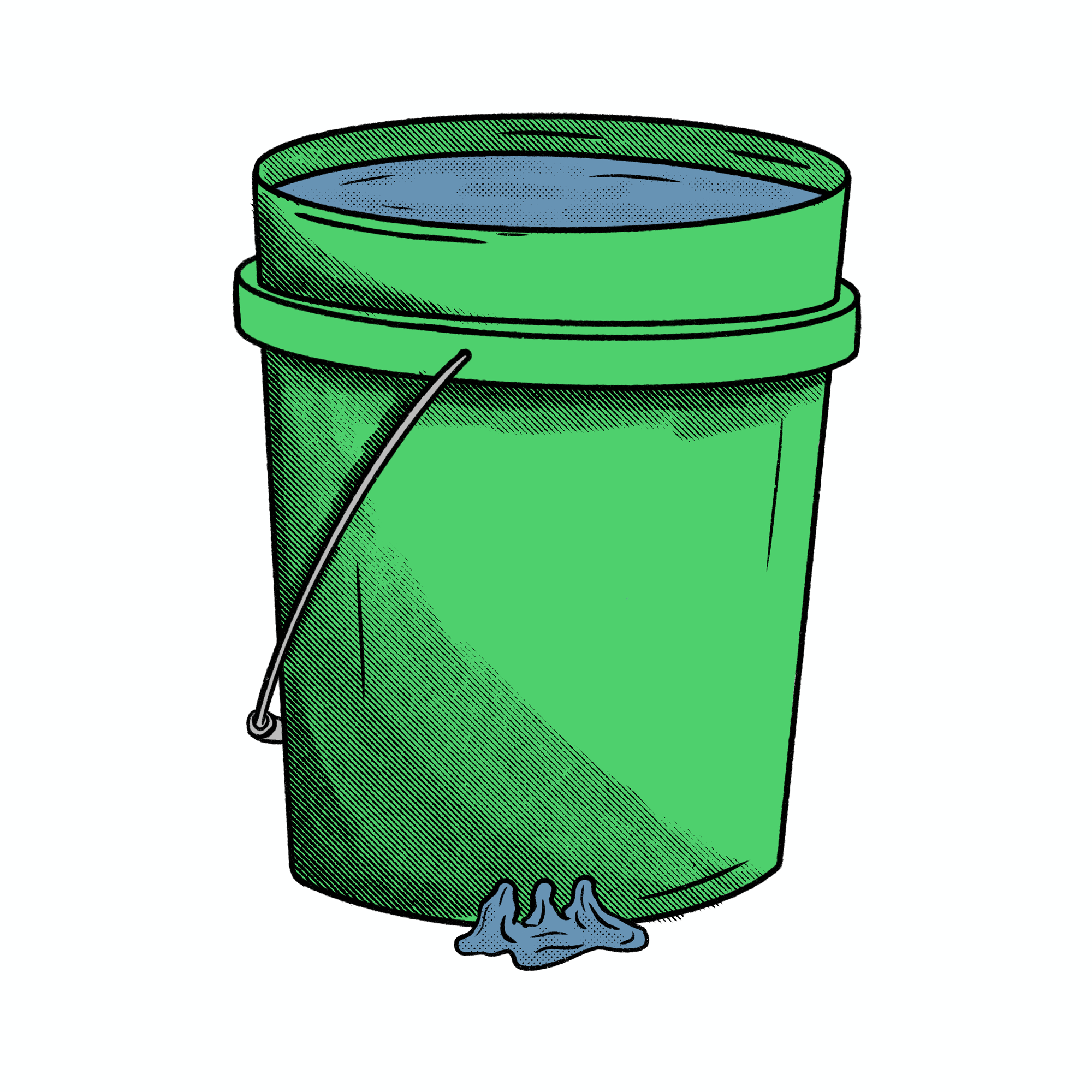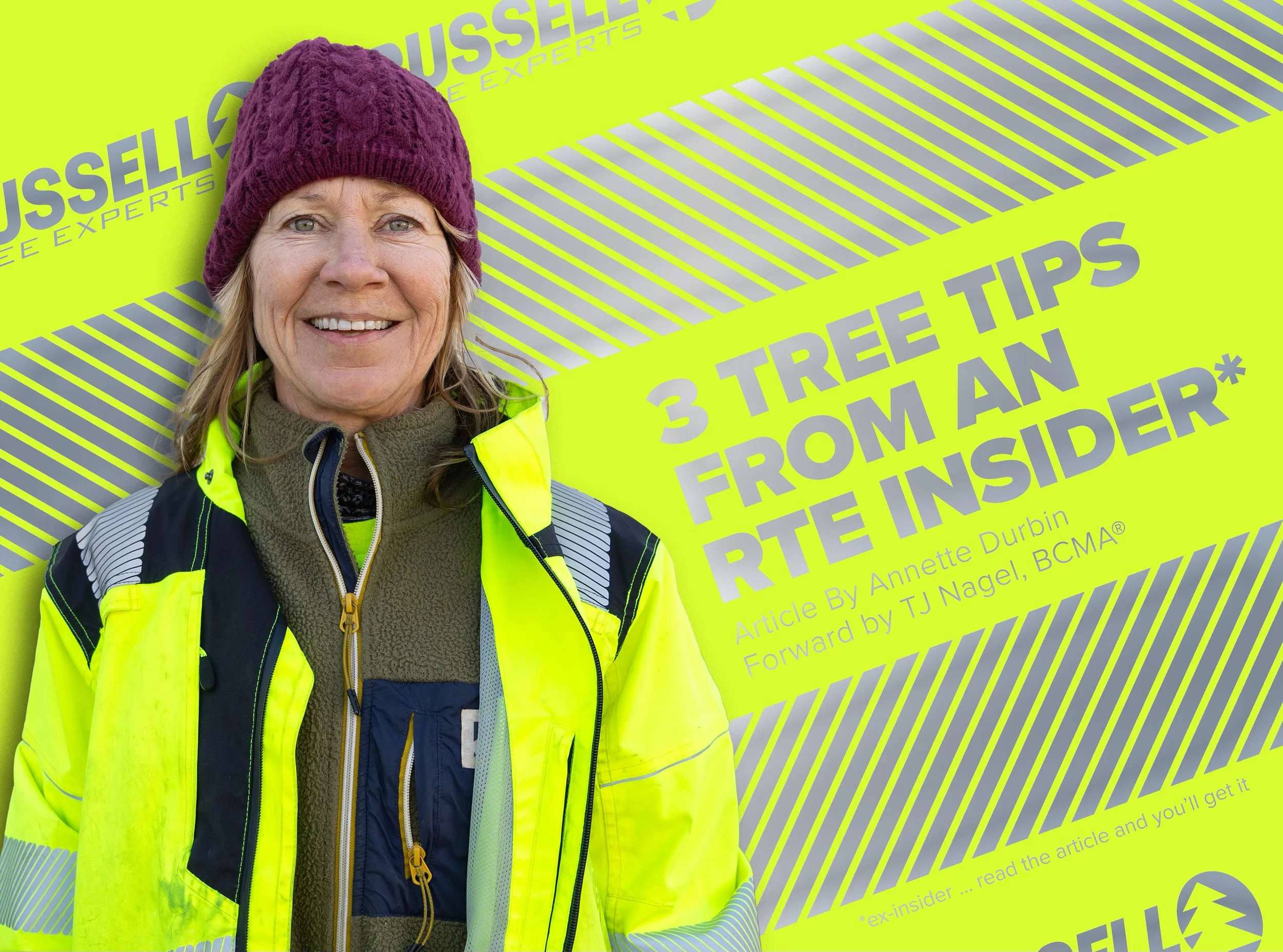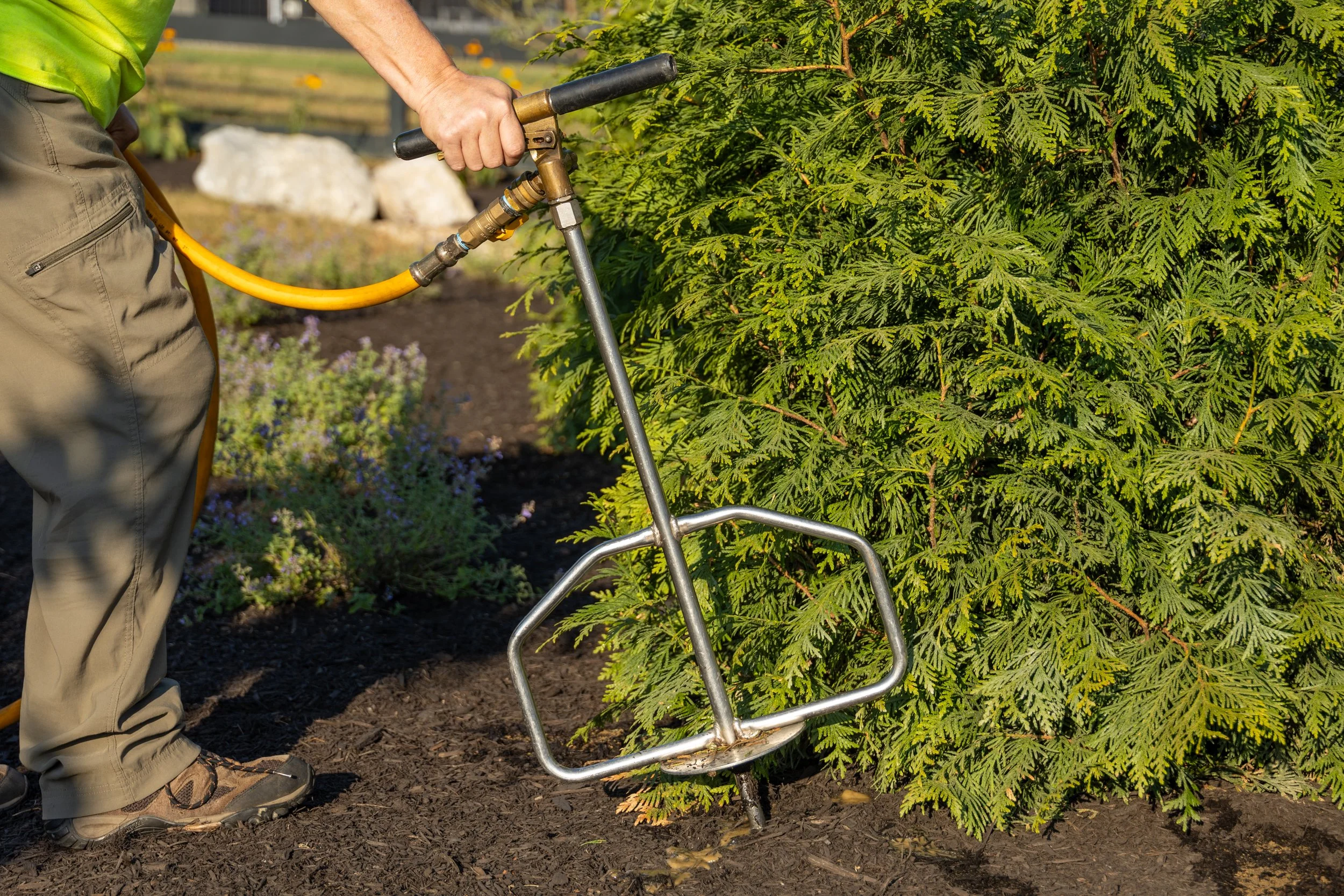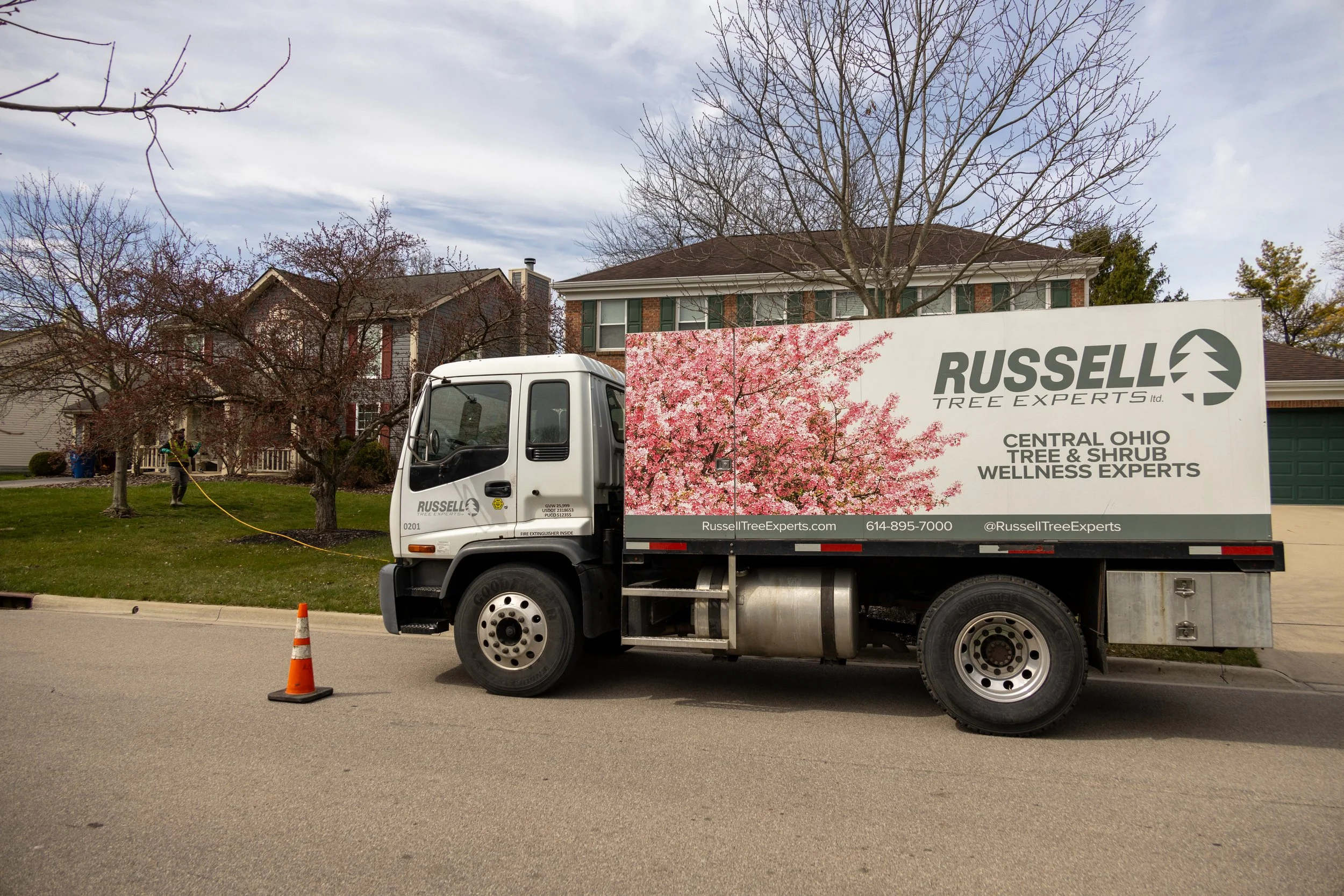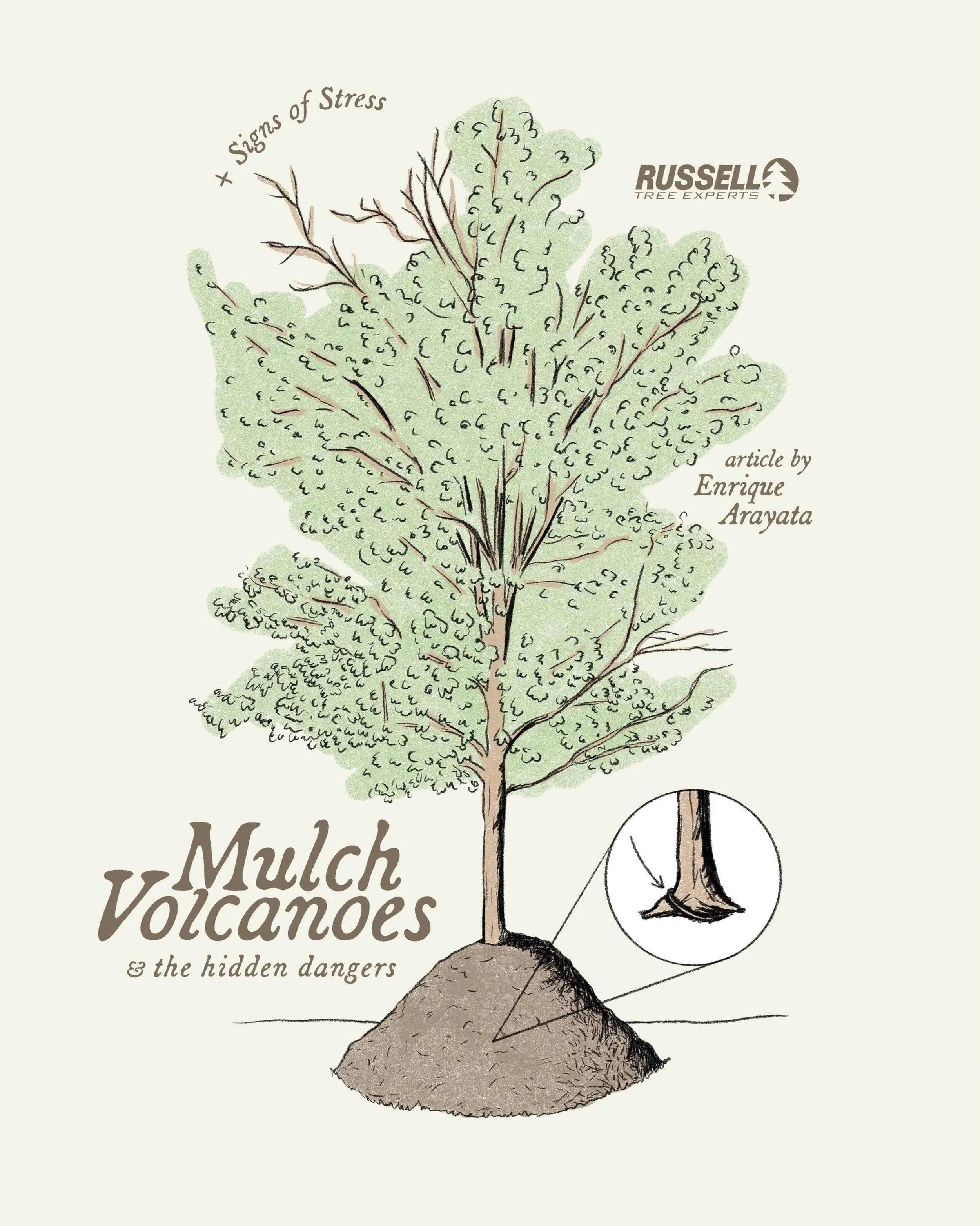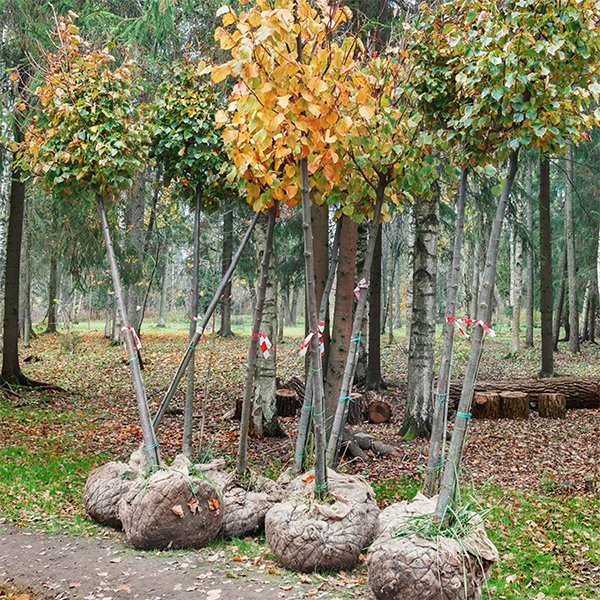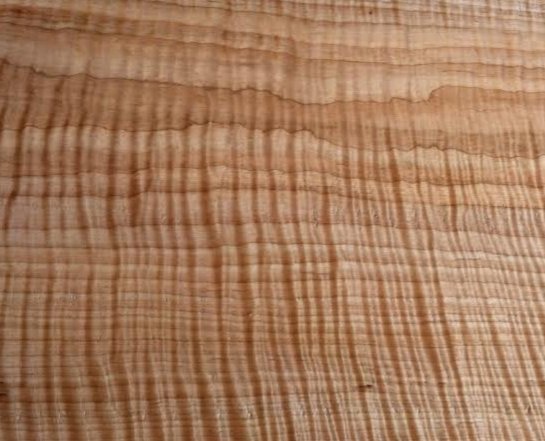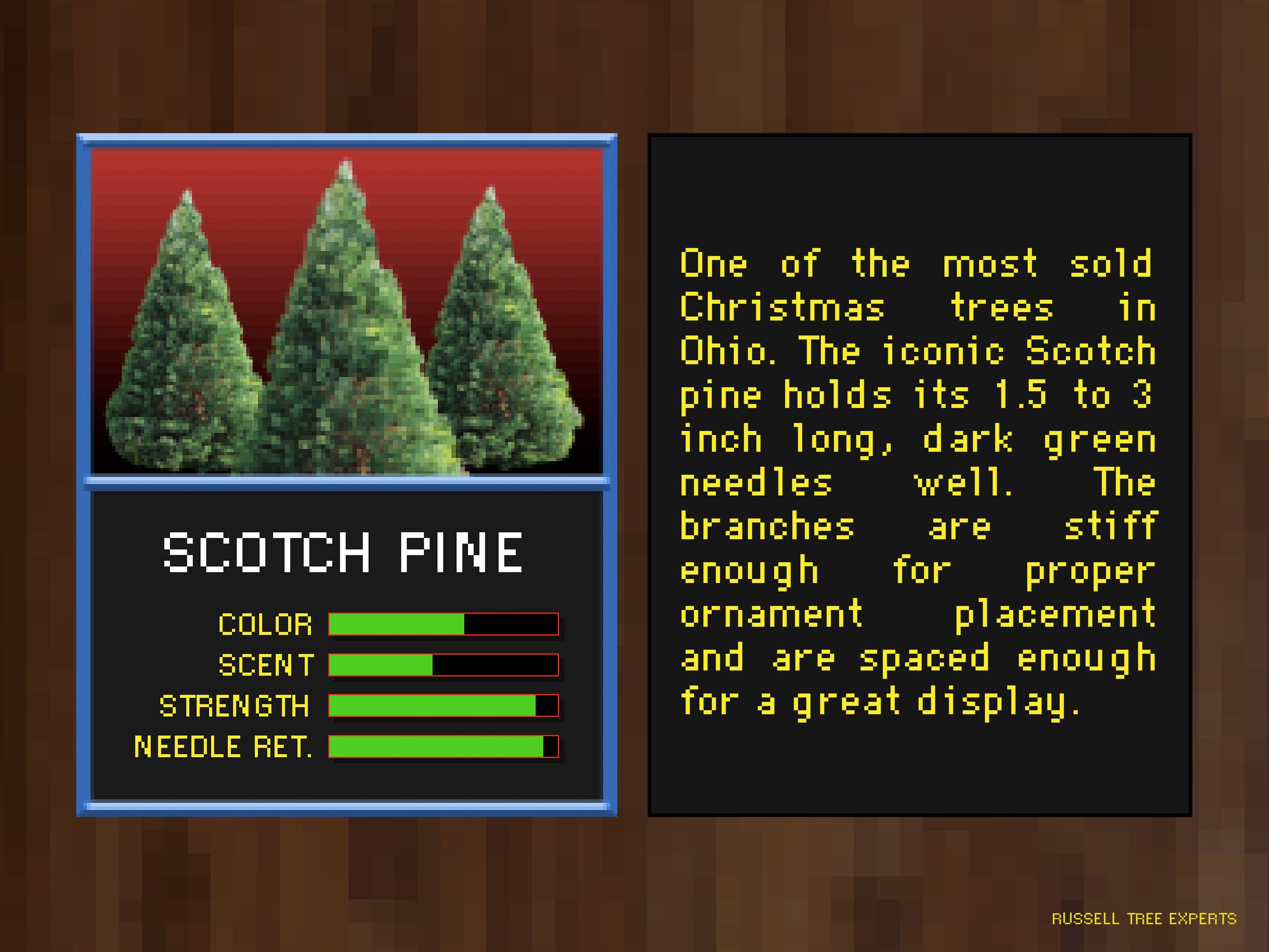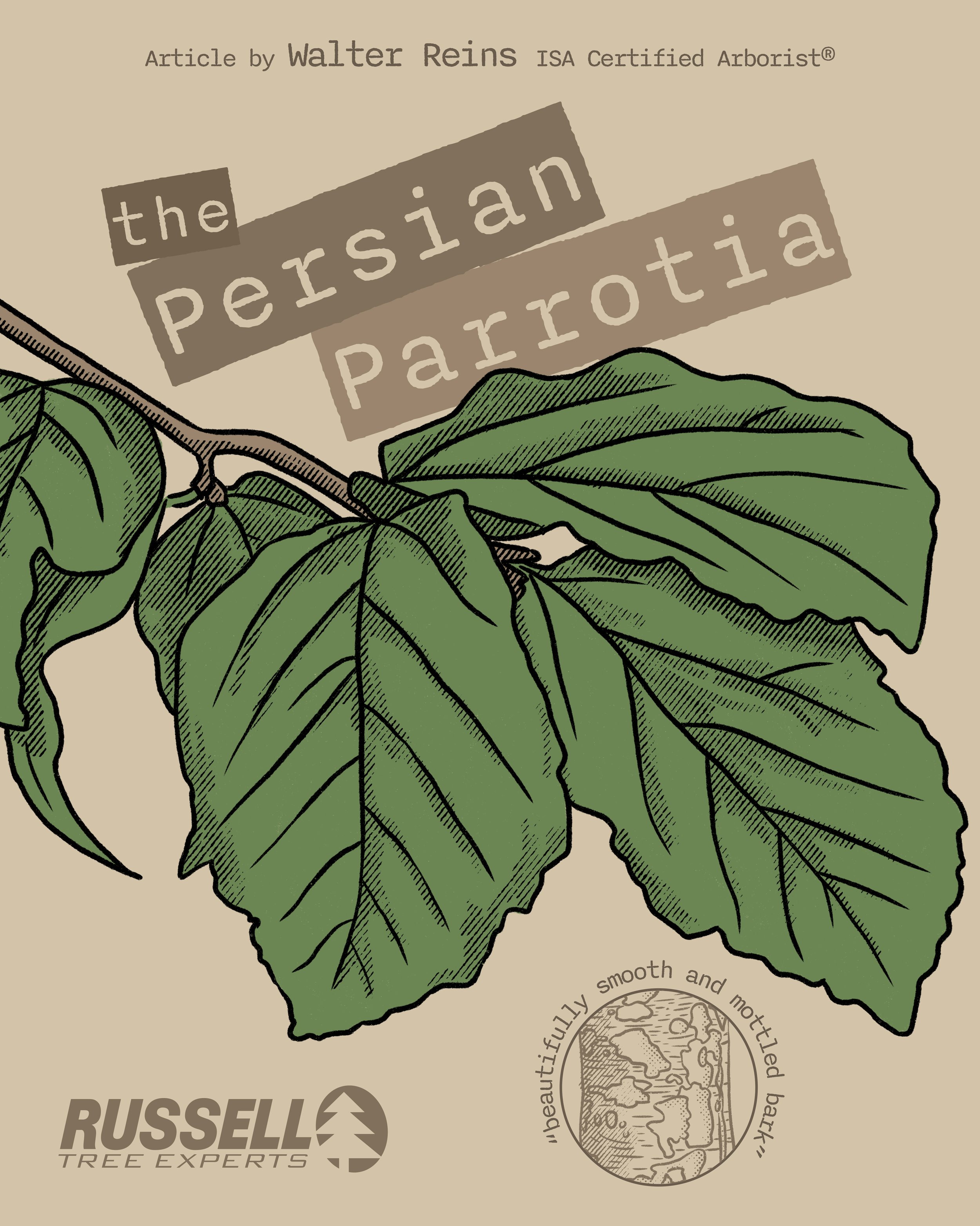By Alex Miller
ISA Certified Arborist® OH-7168A
October 23, 2025
Autumn is upon us! And one of the joys of the season is admiring a vast array of fall foliage. If you are considering adding trees to your landscape, you may be wondering which trees provide the best fall color. Look no further! The list below includes my top 10 picks for trees of various sizes known for their outstanding fall foliage.
Smooth Sumac
Smooth sumac is often overlooked when it comes to landscape plants, but it delivers some of the most vibrant early fall color out of any smaller sized tree. Smooth sumac also has the benefit of being well adapted to a wide array of soils making it a relatively low-maintenance tree. It’s also accompanied by scarlet red berry clusters that if left unharvested will persist after leaf drop extending its landscape value into winter.
Scientific Name: Rhus glabra
Mature Height: 10 to 15 feet
Mature Width: 15 to 20 feet
Sun Preference: Full sun to partial shade
Fall Color: Orange to scarlet or crimson red
2. Washington Hawthorn
Making a reappearance off our article, 10 Trees to Add Spring Color to Your Landscape!, the Washington hawthorn also provides excellent fall foliage as the dark green leaves turn to various shades of orange and red. Similar to the Smooth sumac, the red berries endure after leaf drop and provide tasty snacks for song birds trying to make it through winter. If the thorny branches do not deter you, then this small to medium sized tree is a great year-round choice.
Scientific Name: Crataegus phaenopyrum
Mature Height: 25 to 30 feet
Mature Width: 15 to 25 feet
Sun Preference: Full sun
Fall Color: Oranges and reds
3. Black Tupelo (or Black Gum)
Black tupelo, or black gum as some call it, is one of the most striking native trees for fall color. Its glossy green summer leaves turn into a fiery mix of yellow, orange, scarlet, and maroon. Black tupelos are medium-sized trees with a pyramidal shape when young that become more round with age and prefer moist, acidic soils. Their brilliant color, wildlife value, and tolerance of wet or compacted soils make it a fantastic specimen forboth residential and natural landscapes alike.
Scientific Name: Nyssa sylvatica
Mature Height: 30 to 50 feet
Mature Width: 20 to 30 feet
Sun Preference: Full sun to partial shade
Fall Color: Variety of oranges and reds
4. American Persimmon
Persimmon trees are known for their sweet fruit that ripen in late fall just in time to make their way into pies, cakes, cookies, and sorbets. But that is not the only thing they bring to the table in fall. They also provide excellent yellow to orange fall color for a medium sized tree. Persimmons can be a bit slow growing, certainly taking their time to mature to “fruit-ion”, but those willing to wait will soon find themselves the family favorite come Thanksgiving.
Scientific Name: Diospyros virginiana
Mature Height: 30 to 55 feet
Mature Width: 20 to 30 feet
Sun Preference: Full sun to partial shade
Fall Color: Yellow to orange
5. Sassafras
This fun to say tree is a welcome addition to any landscape, easily identifiable by its unusually shaped leaves smelling of root beer in the spring and of citrus in the fall. These leaves can be oval, mitten-shaped, or lobed but come fall they will burst into brilliant combinations of yellow, orange, and red. The bark on sassafras is also known for its aromatic scent of cinnamon, citrus, and vanilla. This medium sized, drought tolerant fall spectacle of a tree is a perfect fit for homeowners who want to “spice up” their landscape.
Scientific name: Sassafras albidum (most common)
Mature Height: 30 to 60 feet
Mature Width: 20 to 35 feet
Sun Preference: Full sun to partial shade
Fall Color: Varies from yellow to deep reddish purple
6. River Birch
River birch is often planted for its ability to thrive in less-than-ideal drainage situations and for its unique bark texture that brings strong visual appeal year-round to the landscape. The beautiful golden yellow fall leaves are but another reason to add to the long list of reasons to consider adding a river birch to your landscape. However, some soils may prove difficult for river birch to access all of the nutrients it needs. Thankfully this can be remedied easily and here’s an article by another one of our arborists on this topic, Iron and Manganese Deficiency.
Scientific Name: Betula nigra
Mature Height: 40 to 60 feet
Mature Width: 25 to 40 feet
Sun Preference: Full sun to partial shade
Fall Color: Golden yellow
7. Ginkgo
Dating all the way back to the mid-Jurassic period, Ginkgo trees are some of the oldest and toughest trees around. Little known fact, four ginkgo trees survived the bombing of Hiroshima and are still around to this day. If this tree can survive the unfortunate circumstances of an atomic bomb, then this tree will do just fine in your heavily urban landscape. On top of this tree’s incredible resilience, it also boasts spectacularly bright yellow fall foliage that is sure to amaze. Just be sure when you are selecting this tree that you get a male ginkgo as the females produce fruit with a rather unpleasant odor.
Scientific Name: Ginkgo biloba
Mature Height: 40 to 70 feet
Mature Width: 30 to 40 feet
Sun Preference: Full sun to partial shade
Fall Color: Brilliant yellow
8. American Beech
Some may be surprised to see me recommend an American beech tree in light of my previous article, Beech Leaf Disease: The Looming Threat to Central Ohio’s Beeches, but any list of trees talking about fall color would be remiss without its inclusion. The silvery smooth bark of the American Beech is complimented by golden amber fall leaves that hold on long into winter after most other trees have long since gone bare. It is slow growing, but sure to impress for a long time.
Scientific Name: Fagus grandifolia
Mature Height: 50 to 80 feet
Mature Width: 40 to 60 feet
Sun Preference: full sun to partial sun
Fall Color: Bronze to copper
9. Red Oak
As the name would imply, red oaks provide a tower of brick red leaves that can easily command over a large landscape. Their ability to grow quickly while juvenile and thrive in our native soils makes the mighty red oak a staple for new planters looking for a cornerstone piece in a larger more natural landscape. However, in the compacted soils and confined spaces of our more urban areas, the red oak can face challenges that limit its growth and diminish the vibrant color it is known for.
Scientific Name: Quercus rubra
Mature Height: 60 to 80 feet
Mature Width: 60 to 80 feet
Sun Preference: Full sun to partial shade
Fall Color: Dark reddish brown
10. Shagbark Hickory
Truthfully all members of the hickory family are going to give you an outstanding yellow fall foliage and deserve a place on this list, but I chose to highlight the shagbark hickory for the additional appeal of its iconic peeling bark. Hickory trees are incredibly durable and long-lived trees that also require minimal care once established. If you are looking for a unique, low-maintenance tree that will provide excellent shade, beautifully vibrant yellow fall foliage, and habitat for wildlife for tens of generations, then look no further.
Scientific Name: Carya ovata
Mature Height: 70 to 80 feet
Mature Width: 50 to 60 feet
Sun Preference: Full sun to partial shade
Fall Color: Brilliant yellow
And that’s my list! Whether you’re looking for bold reds, glowing golds, or a striking mix of fall hues, these 10 trees offer some of the best autumn color nature has to offer. And here at Russell Tree Experts we offer various tree care services to keep your landscape display breathtaking for years to come, such as deep root irrigation, fertilization, insect and disease management, tree pruning, and much more! For a free tree work quote on how to elevate your landscape by one of our 25+ ISA Certified Arborists®, please visit RussellTreeExperts.com/Quote or call us at (614) 895-7000. Happy planting!
ADDITIONAL ARBOR ED™ ARTICLES!
Alex Miller I Regional Manager, Russell Tree Experts
Alex joined Russell Tree Experts in 2021 and has been in the green industry since 2020. He is an ISA Certified Arborist®, EHAT certified, CPR and first aid certified, OSHA 10 certified, and holds an ODA commercial pesticide license. Alex’s favorite tree is a magnolia tree! When not at RTE, he enjoys rock climbing and his favorite movie series: The Lord of the Rings!

